
The president of the United States certainly has a lot on his shoulders. If you compare pictures from when they begin the job and when they leave office they look like they’ve aged decades in only four to eight years. They’re one of the most powerful people in the world and have a considerable amount of responsibility.
However, all this does come with many perks, some of which last the rest of their lives. Former presidents walk away with massive pensions and great health insurance along with plenty of opportunities to make money.
To determine the best perks of being president, 24/7 Tempo reviewed information from The White House Museum, the U.S. General Services Administration, and more to find the amenities, accommodations, staff, and financial benefits given to current and former presidents.
A lot of presidential perks come with living in the White House. The compound was completed in 1794 and is held as property No.1 in the National Park Service hierarchy. It is equipped with all sorts of luxuries and security measures, and presidential families have much say over how they wanted it decorated.
Presidents have added luxury amenities while living there like swimming pools, tennis courts and bowling alleys. Several presidents have come from very wealthy backgrounds and are used to living in luxury. However, there are some who have risen from much more humble beginnings. These are the 9 poorest presidents in American history.
On top of a very generous salary for a public servant, the president receives all sorts of spending allowances for travel and entertainment. Laws prevent them from profiting beyond this while in office — but once they’re out a world of opportunities open for them.
Speaking engagements and book deals can be extremely lucrative and every president in recent history has substantially increased their wealth in the years after they’ve left office. They also continue to receive other financial benefits such as free mail and security. This is what every president did after leaving the White House.
Click here to see the best perks of being president of the United States
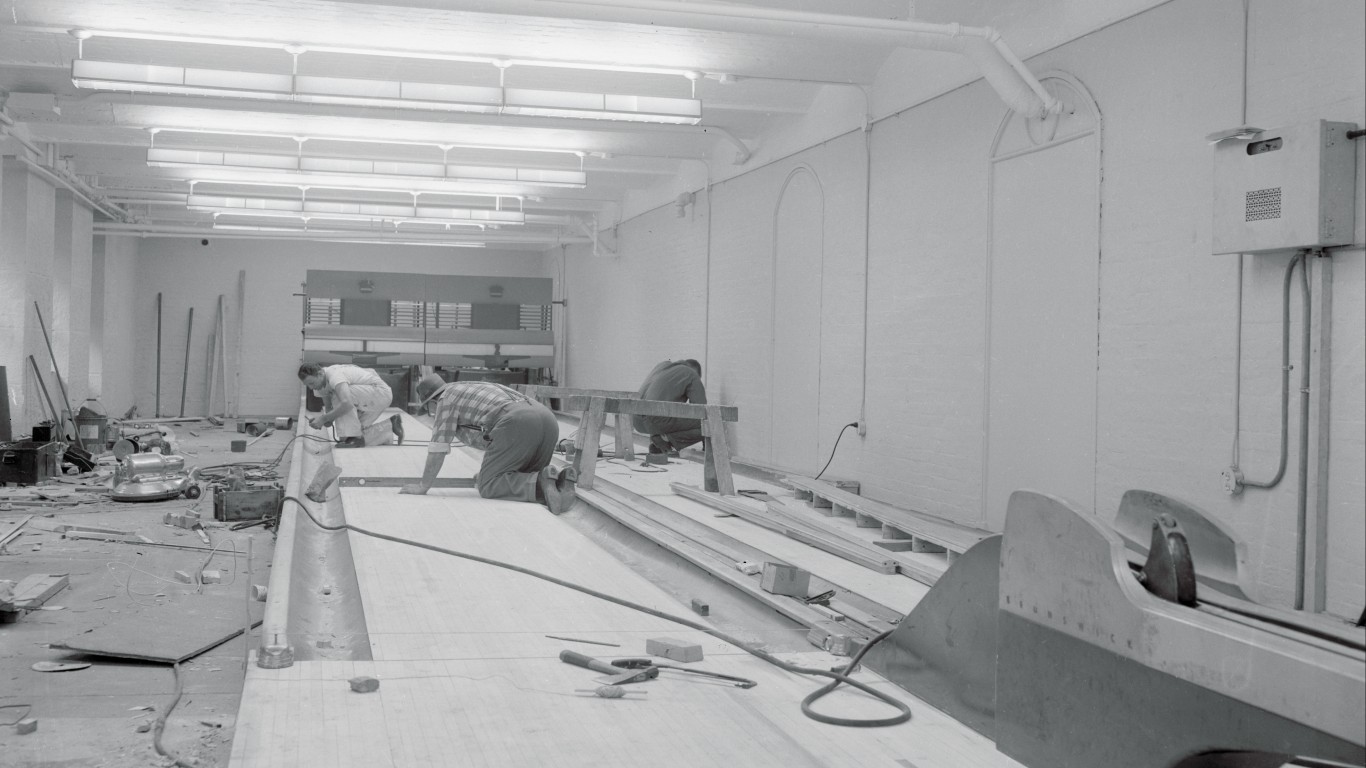
1. Bowling alley
The first bowling alley was built in the White House in 1947 as a gift to President Truman. Truman wasn’t a big bowler himself but let the staff start a league. However, the lanes were removed in 1955 and now the Situation Room currently sits in their place. In 1969, President Nixon had a one-lane alley built in an area below the driveway. This lane remains to this day for presidents and staff to use.
[in-text-ad]

2. Lifetime security
In 1994, to save money, Congress limited protection for former presidents and their spouses to 10 years after they left office. Bill Clinton signed the legislation even though, interestingly, he was exempted from it. However, in 2013 Obama signed a law that extended lifetime Secret Service protection to former presidents and spouses. It also added protection for the children of presidents until they turn 16.
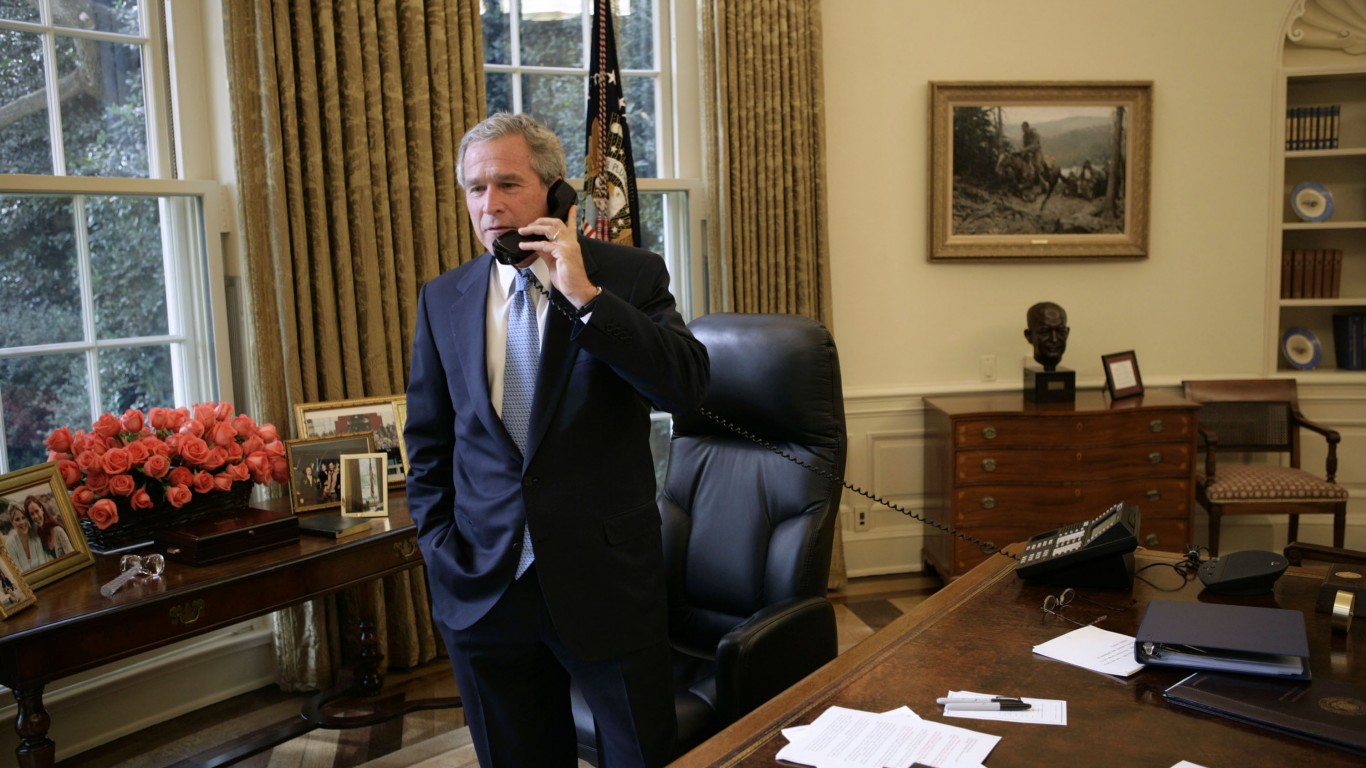
3. Sizable salary
The president receives a salary of $400,000 a year along with several other financial benefits. John F. Kennedy, Herbert Hoover, Donald Trump, and George Washington all refused a salary or donated it to others. Congress has only given the president a raise five times and they cannot receive a raise while in office. It was last raised in 2001 and George W. Bush was the first to receive $400,000. Richard Nixon received $200,000 in 1969 which is equivalent to $1.42 million in 2020 money. When taking inflation into account, modern presidents are the least well compensated.
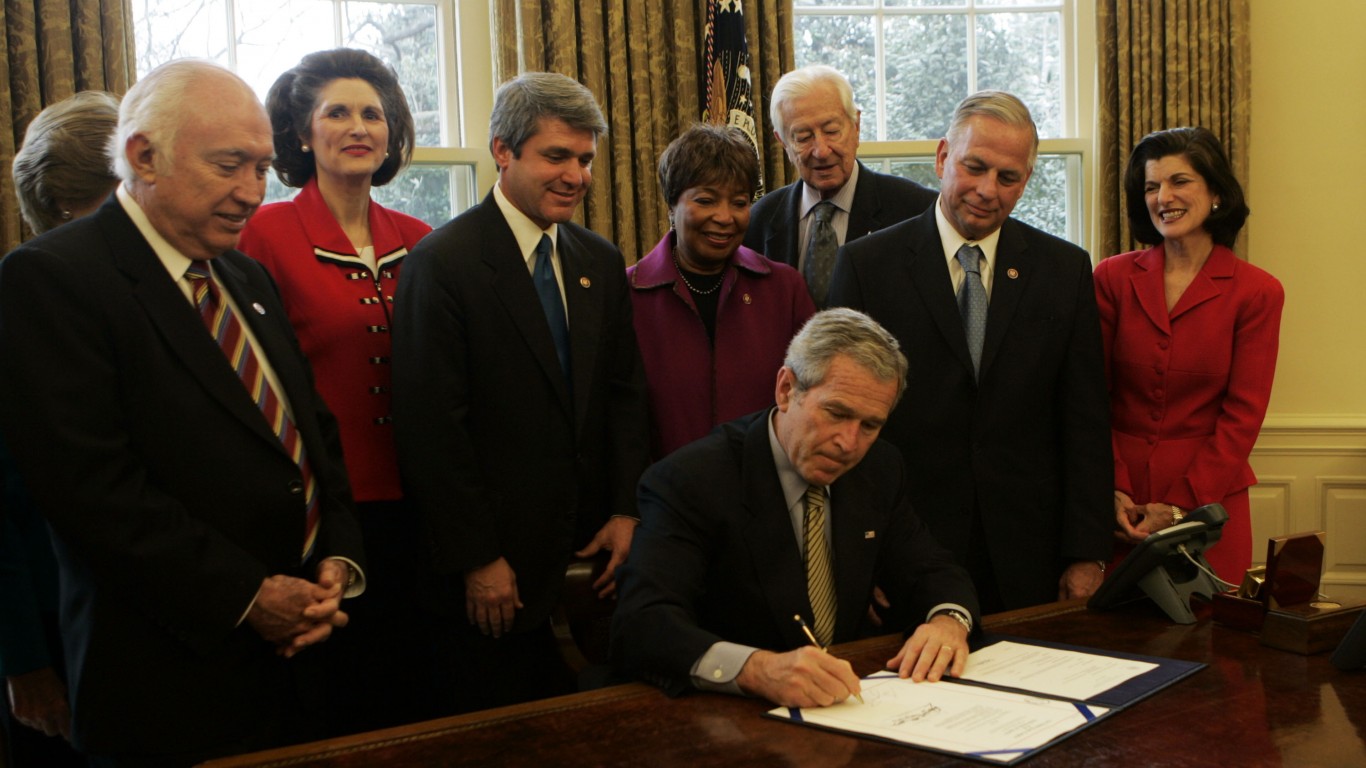
4. Full-time staff
Joe Biden’s White House has over 500 staff members that do a wide range of jobs. Many have jobs involved in making policy and running the country but several also do upkeep and security. The White House is a massive building that requires all sorts of people to maintain it, keep it secure, and keep the president taken care of.
[in-text-ad-2]
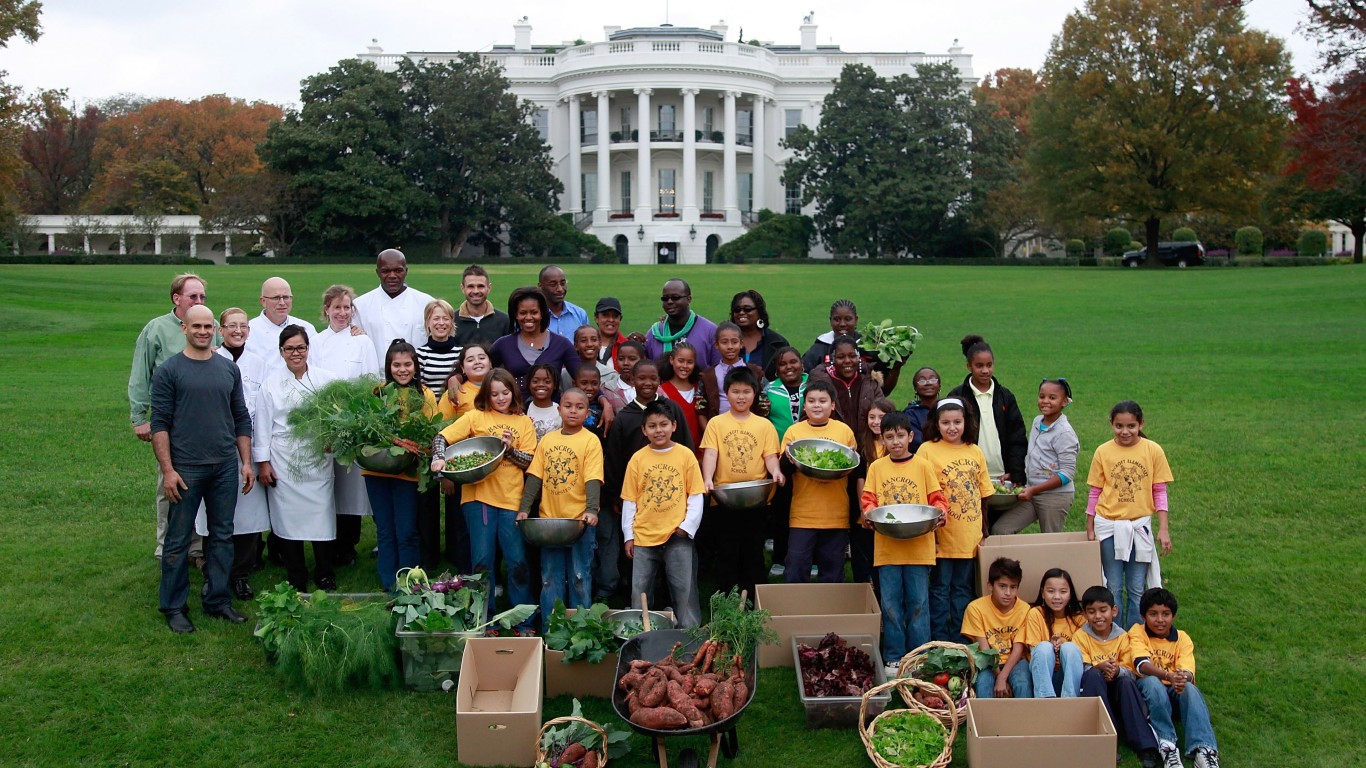
5. Fresh-grown vegetables
The White House Kitchen Garden was planted on the White House lawn by First Lady Michelle Obama in 2009. The expansive garden is 2,800 square feet and provides the residents and guests with fresh produce. It also aims to be a model for others to grow fresh food at home. The National Park Service takes care of the vegetable garden and the rest of the White House grounds.
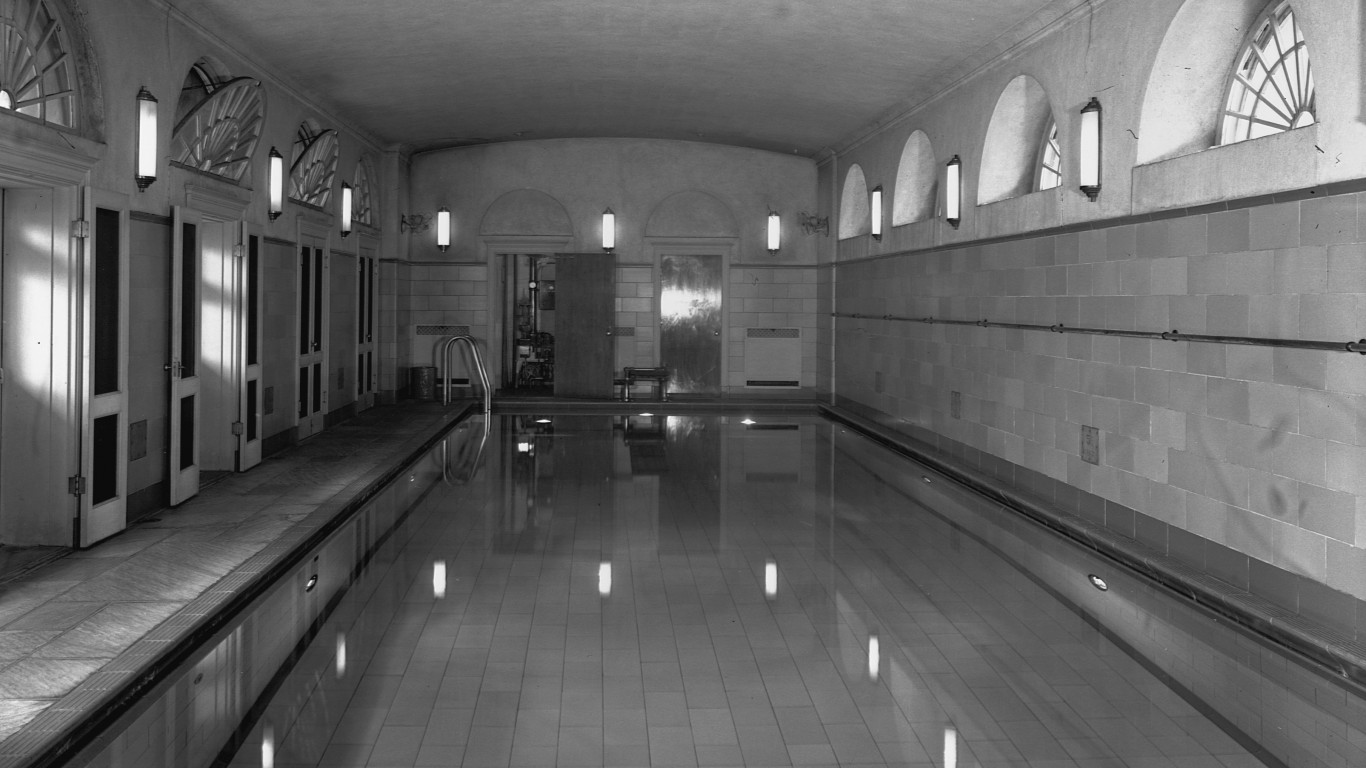
6. Swimming pool
All good mansions have a swimming pool, right? Well, the White House has two. The indoor swimming pool was completed in 1933 after a financing campaign by the New York Daily News. The goal was to build a pool for President Franklin D. Roosevelt who suffered from polio and often swam at a therapy pool in his previous home. The first White House pool was located where a press briefing room is now. In 1975 President Gerald Ford had an outdoor pool installed on the grounds.
[in-text-ad]
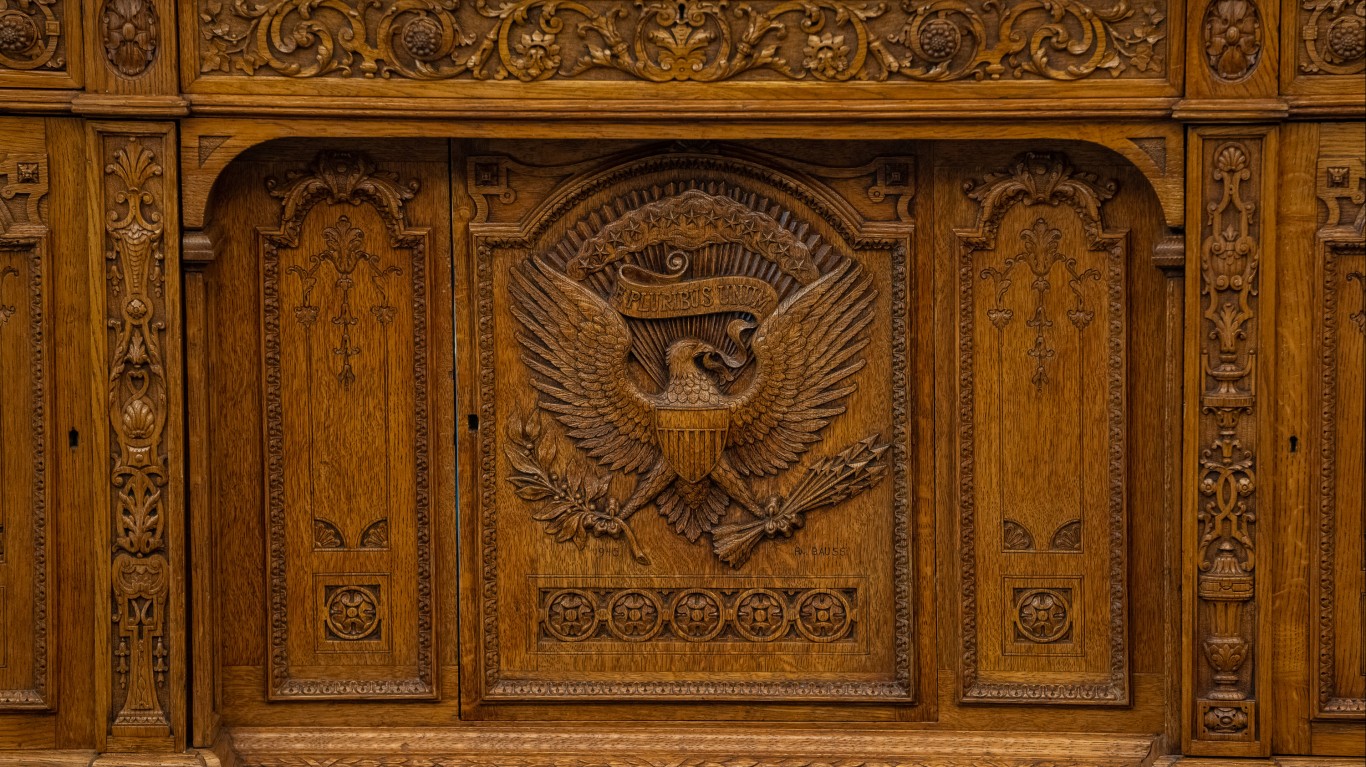
7. Access to historical artifacts
The White House itself is filled with a number of historical artifacts. By law, some cannot leave the building such as the famous Resolute desk. The 19th century desk has been used by several presidents in the Oval Office. There are numerous other artifacts that have been collected over the years and often have significance in American history.
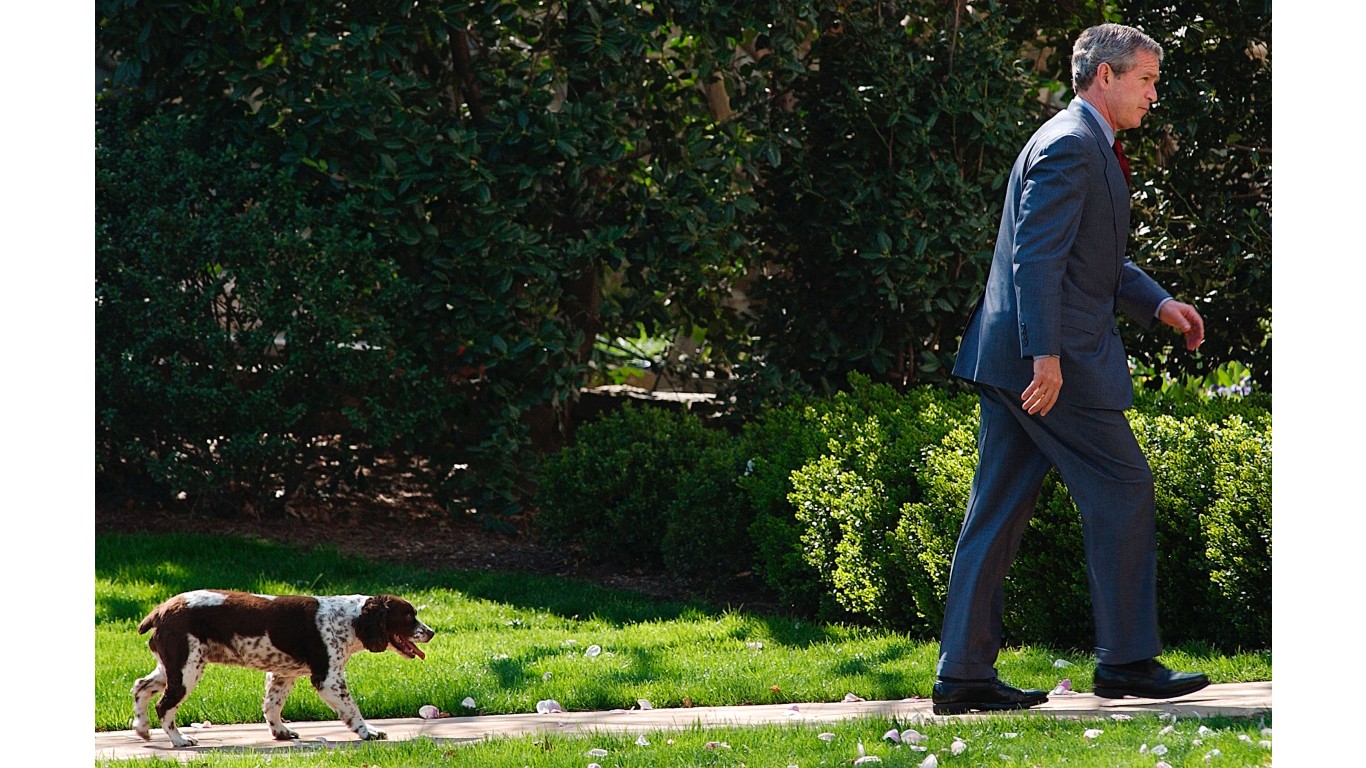
8. Travel stipend
The U.S. President has a yearly non-taxable $100,000 travel account. This was set January 1, 2001, when the president’s salary was also upped to $400,000 a year. Presidents can also receive significant reimbursement for travel after they have left office. This can be up to $1 million for security and travel of a former president and up to $500,000 for a former presidential spouse.

9. Expense account
The president receives a $50,000 annually expense account. The expense account was started in 1949 and has not increased since. Back in the 1940s $50,000 went a lot further than it does today. The expense account can be used for clothing, personal grooming, and personal meetings that do not fall under official business.
[in-text-ad-2]
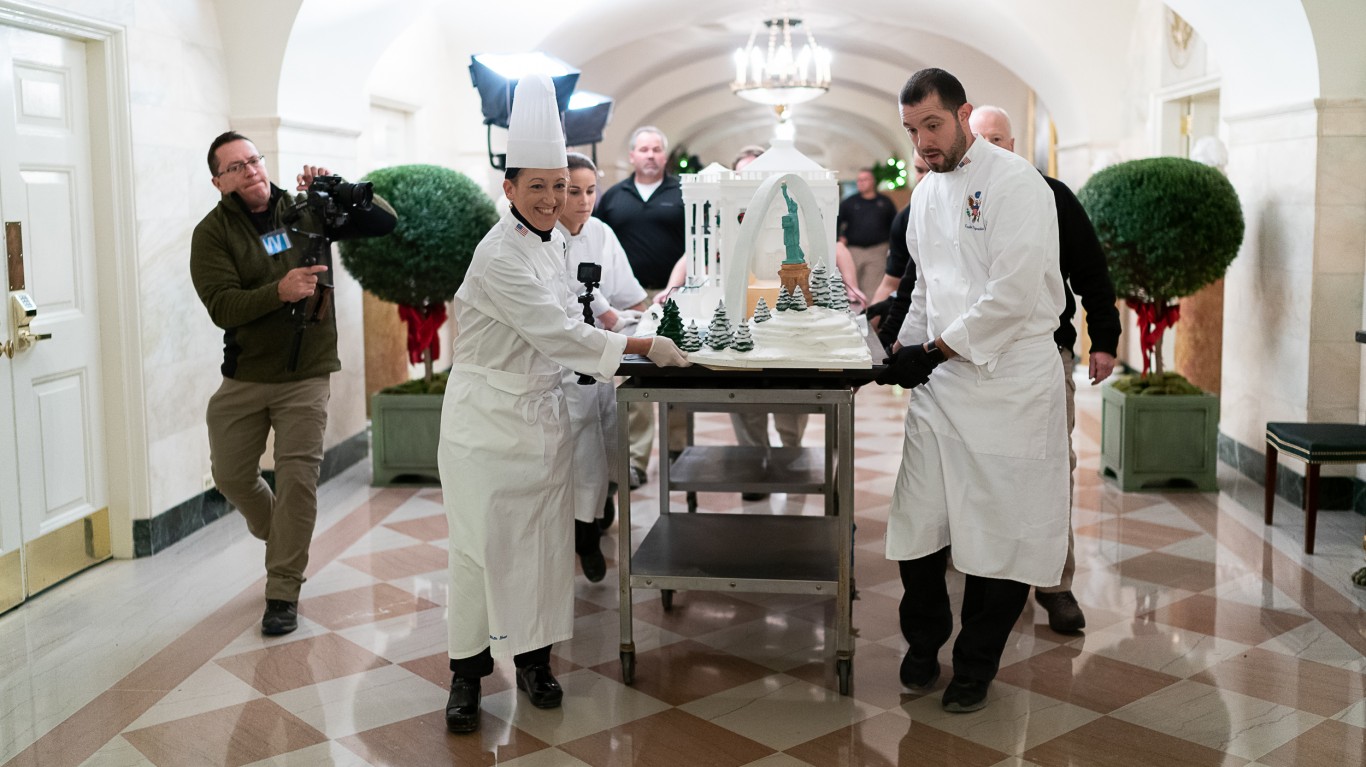
10. Fresh-baked pastries
Presidents certainly eat well and they have to be able to impress foreign dignitaries and other guests with delicious food. The White House has an official pastry chef that makes all sorts of cakes, chocolates, and other sweets for all special occasions and beyond. Susan Morrison is the current White House Executive Pastry Chef and has held the job since 2015.

11. Putting green
The White House putting green was first installed in 1954 by President Dwight D. Eisenhower. However, President Richard Nixon turned out to be no fan of golf and had it removed during his time in office. That wouldn’t be the last of the putting green though. George H. W. Bush had it reinstalled in 1991. Bill Clinton would then have it moved during his time, closer to the Oval Office, where it sits today.
[in-text-ad]
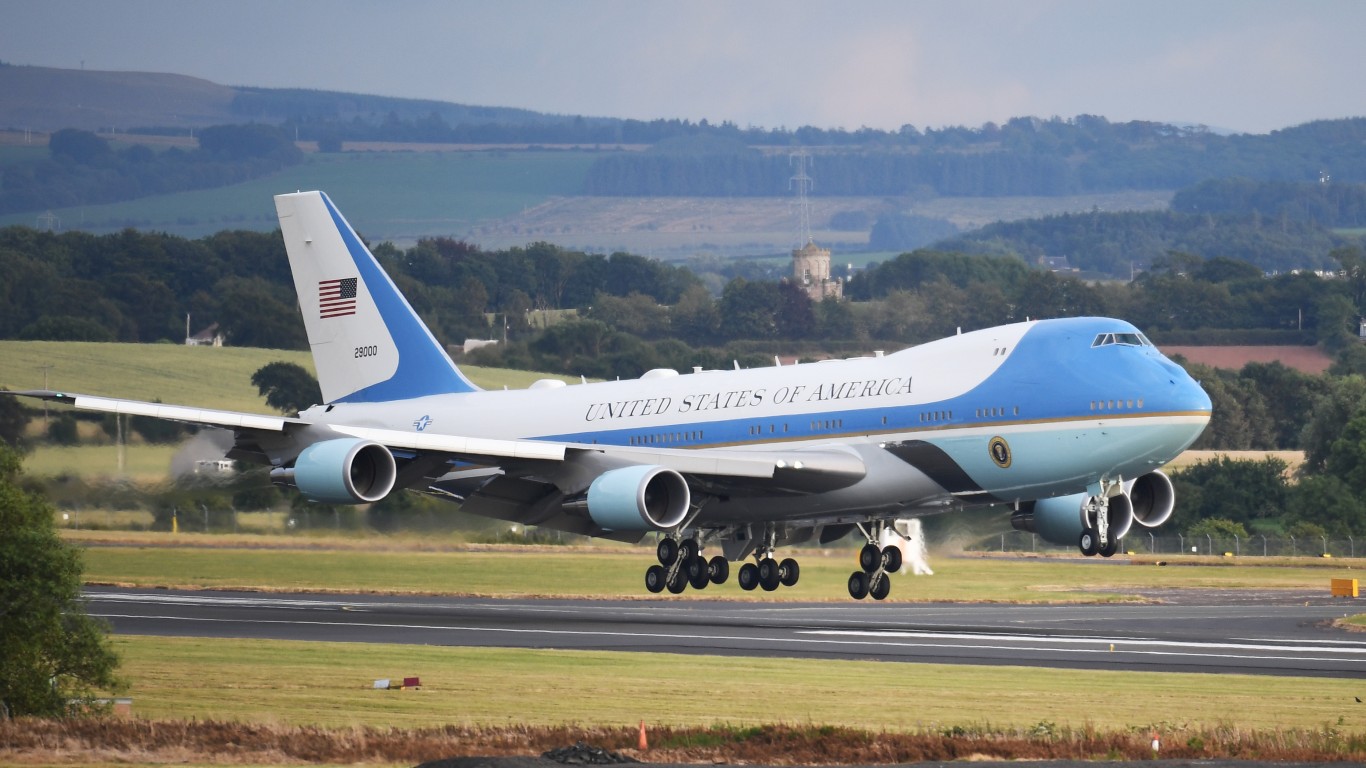
12. Air Force One
Air Force One is the president’s primary air transportation. Several aircraft have had the designation of Air Force One over the years and the government currently uses two highly customized Boeing VC-25s. The planes are equipped with a range of secured and unsecured communications devices to allow the president and his team to remain in contact with the outside world.
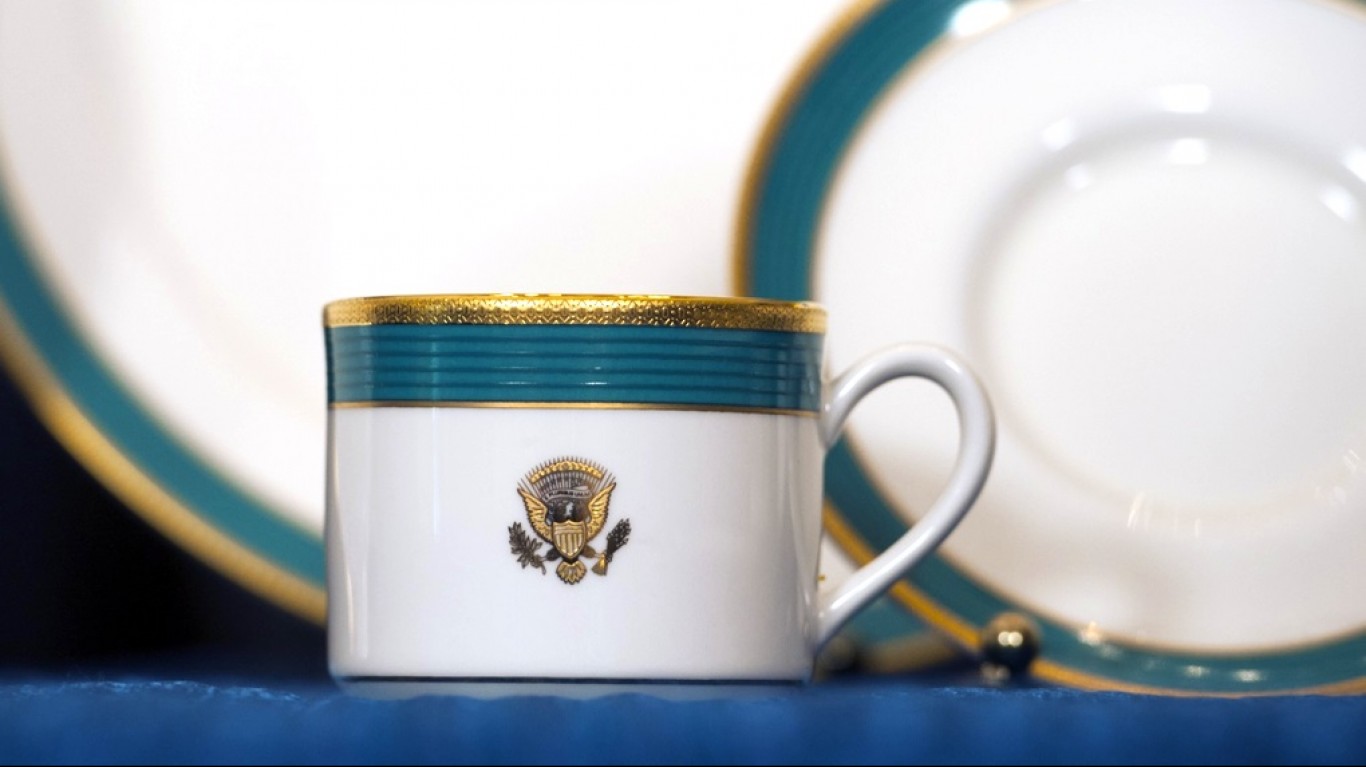
13. Famous china
The White House’s fine china collection is so important that it even has its own display room. The dinnerware is brought out for special occasions to impress guests. The collection has been slowly acquired by the government over the years, dating back to as early as 1817. New sets of china have been introduced under different presidents, each with its own unique aesthetic and always adorned with an eagle and other U.S. government imagery.
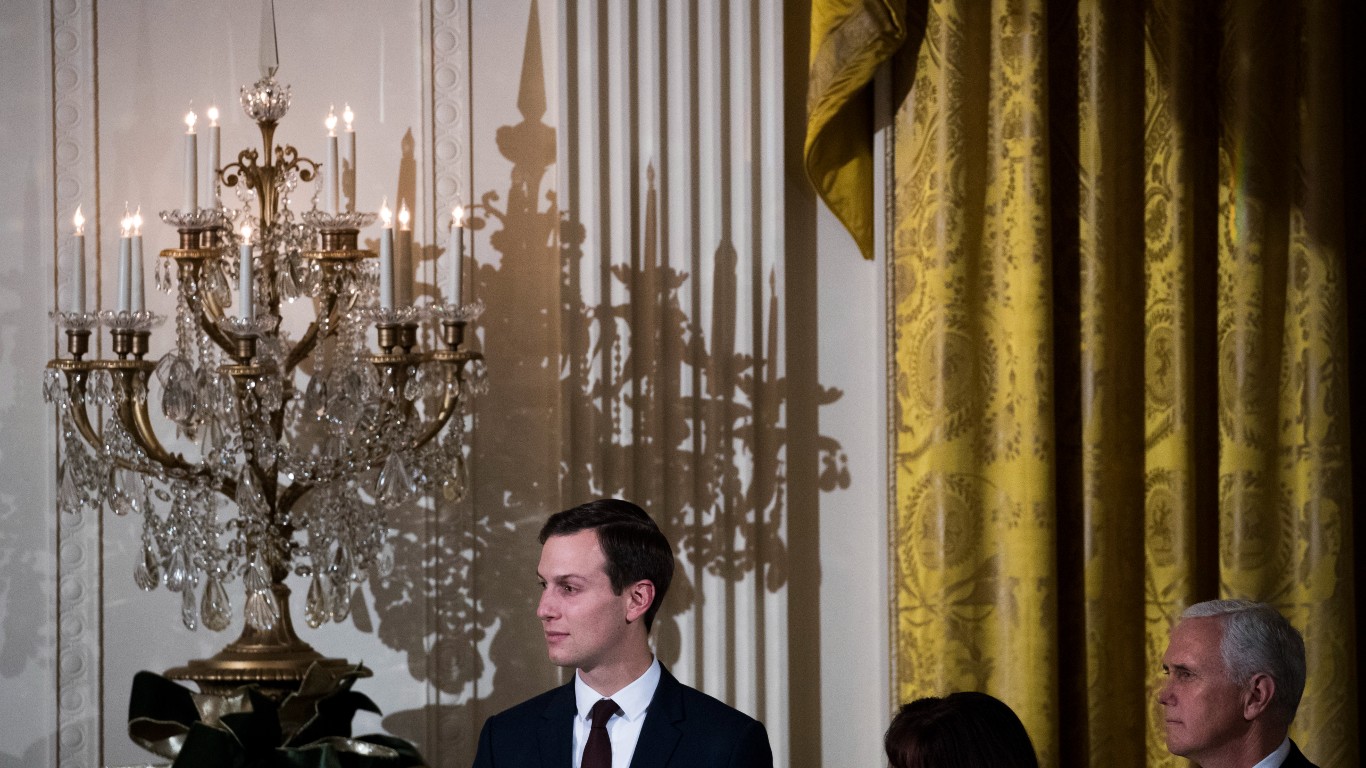
14. Entertainment budget
U.S. presidents have access to a $19,000 annual entertainment account. What exactly they use it for is up to them and they already have plenty of good options at their home. However, if they want to go out and enjoy themselves in ways that are not official state business, they can use the entertainment account. A lot of options aren’t necessarily open to them because of security risks but they can use the money to go on vacation or eat at restaurants.
[in-text-ad-2]
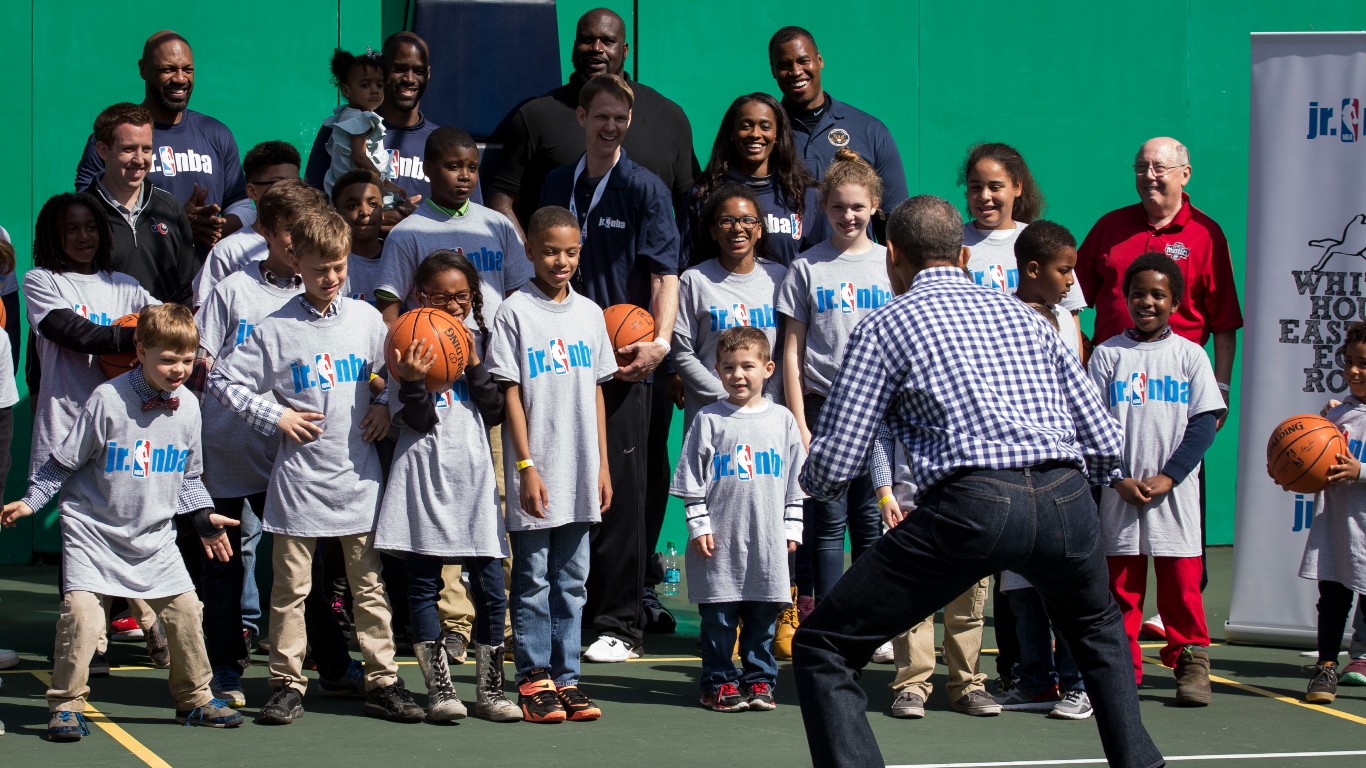
15. Basketball court
Since 1991 the White House has had a small basketball court. However, President Obama had the home’s tennis court upgraded so it could be used to play full court basketball. Obama famously is a big fan and basketball enthusiast. He even had to get stiches during his presidency after a minor on-court injury.

16. Workout room
During the Clinton Administration, what had been a third floor sitting room was transformed into an exercise room. It had previously been a bedroom that was decorated by Jackie Kennedy before being downgraded into a sitting room. It’s not a super expansive space but it has enough for presidents and their families to get a quick workout in as they navigate through life at the White House.
[in-text-ad]
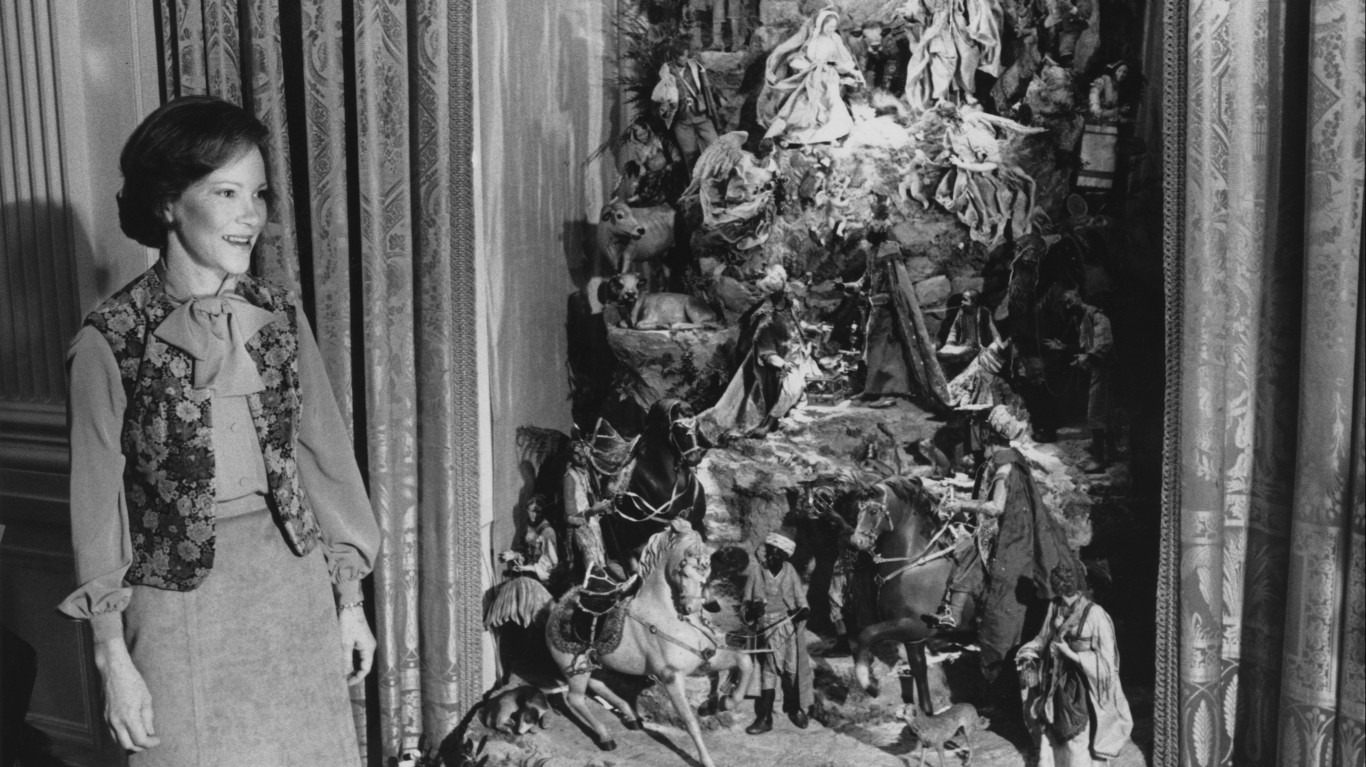
17. Christmas decorations
Every year the White House is decorated, with quite a budget, for the holiday. Often, the First Lady oversees the decorations and has created some very interesting aesthetics. Recently, Melania Trump created some unique decorating schemes that could be described as beautiful or nightmarish depending on who’s looking.
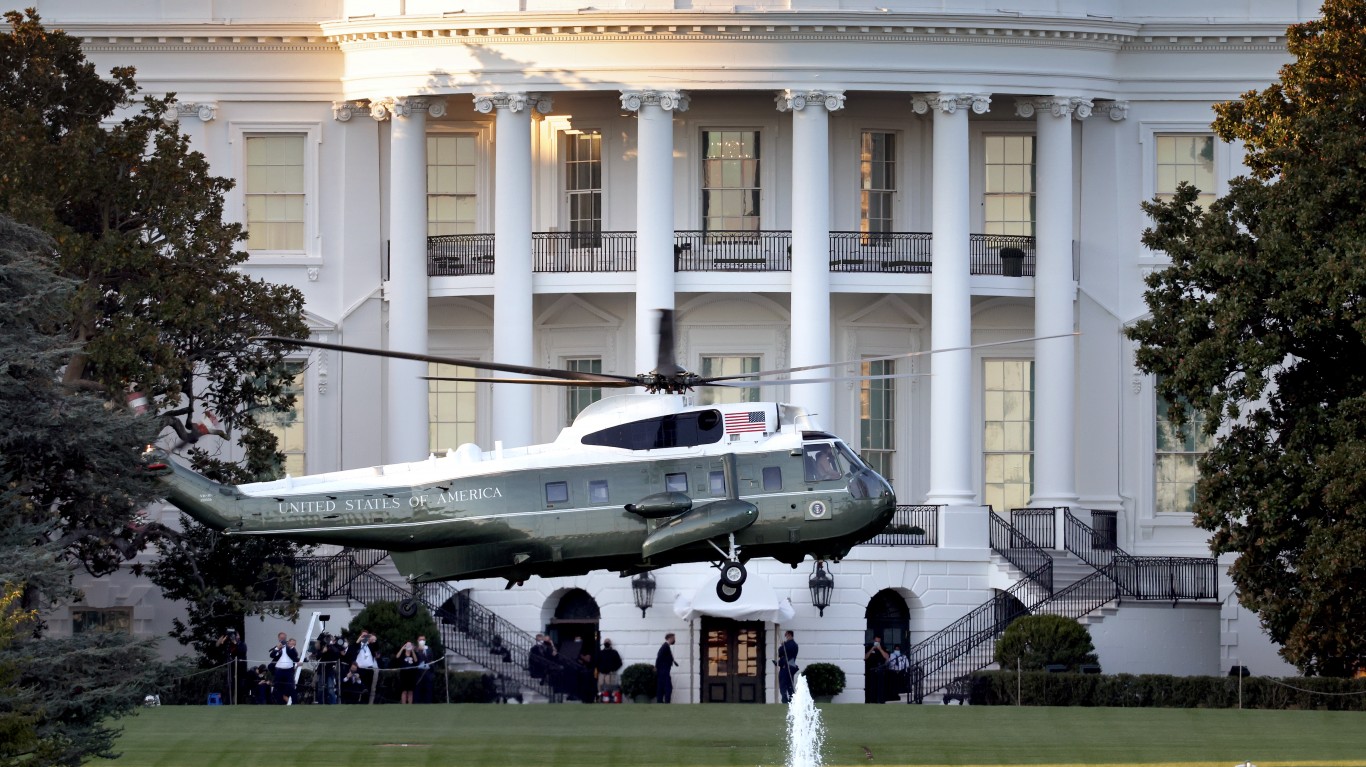
18. Marine One
Officially Marine One is the designation of any helicopter that carries the president; however, it usually refers to one of two choppers that are currently in use to transport the president on shorter journeys. The two helicopters used are a Sikorsky VH-3D Sea King and a VH -60N. Flying in a helicopter can be much easier than a presidential motorcade. For one, it doesn’t clog up traffic and can be much safer than being on the ground. The helicopter itself is equipped with extensive safety and luxury features.
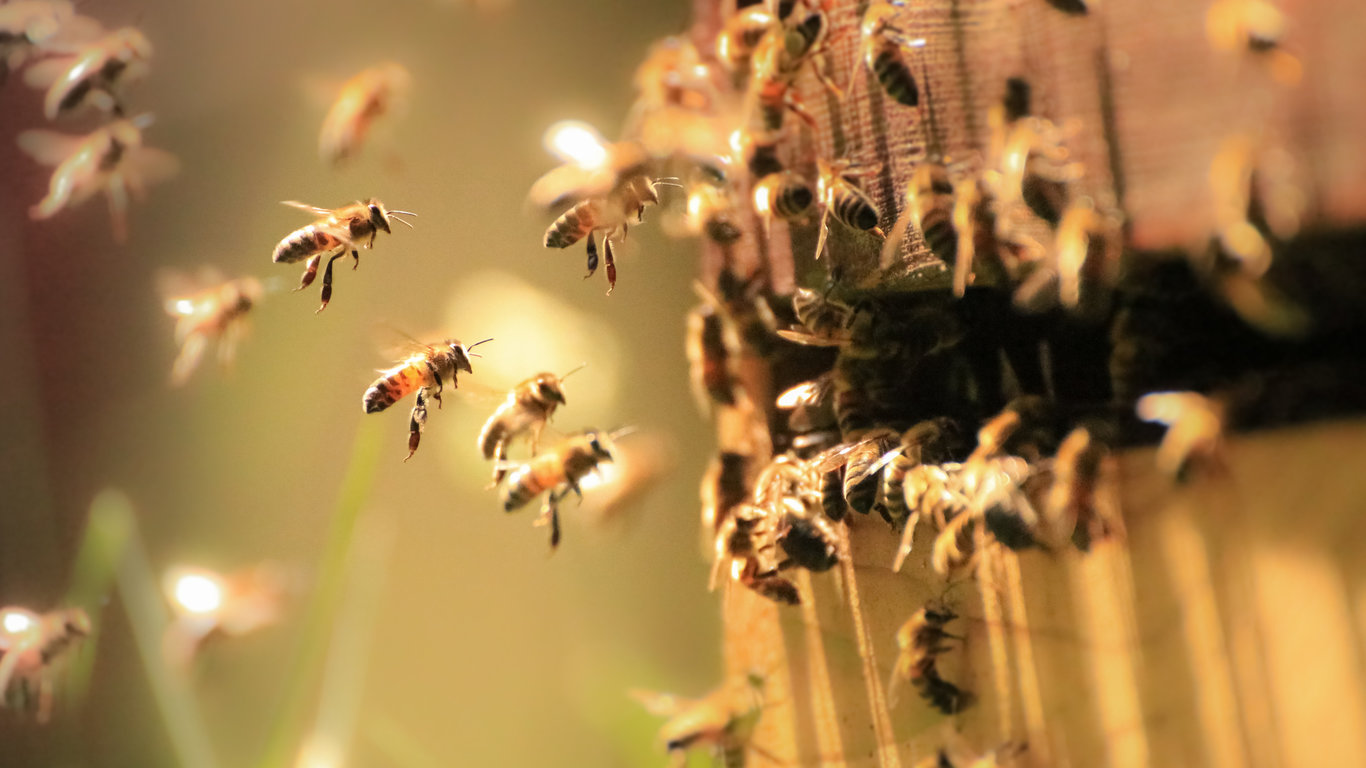
19. Fresh honey
During Obama’s time in office, the house carpenter mentioned he’d picked up beekeeping as a new hobby and quickly drew the interest of the staff. He ended up installing a beehive in the garden and now the grounds are home to around 70,000 honeybees. The carpenter is now the official White House beekeeper and the honey that’s produced is used in the kitchen.
[in-text-ad-2]
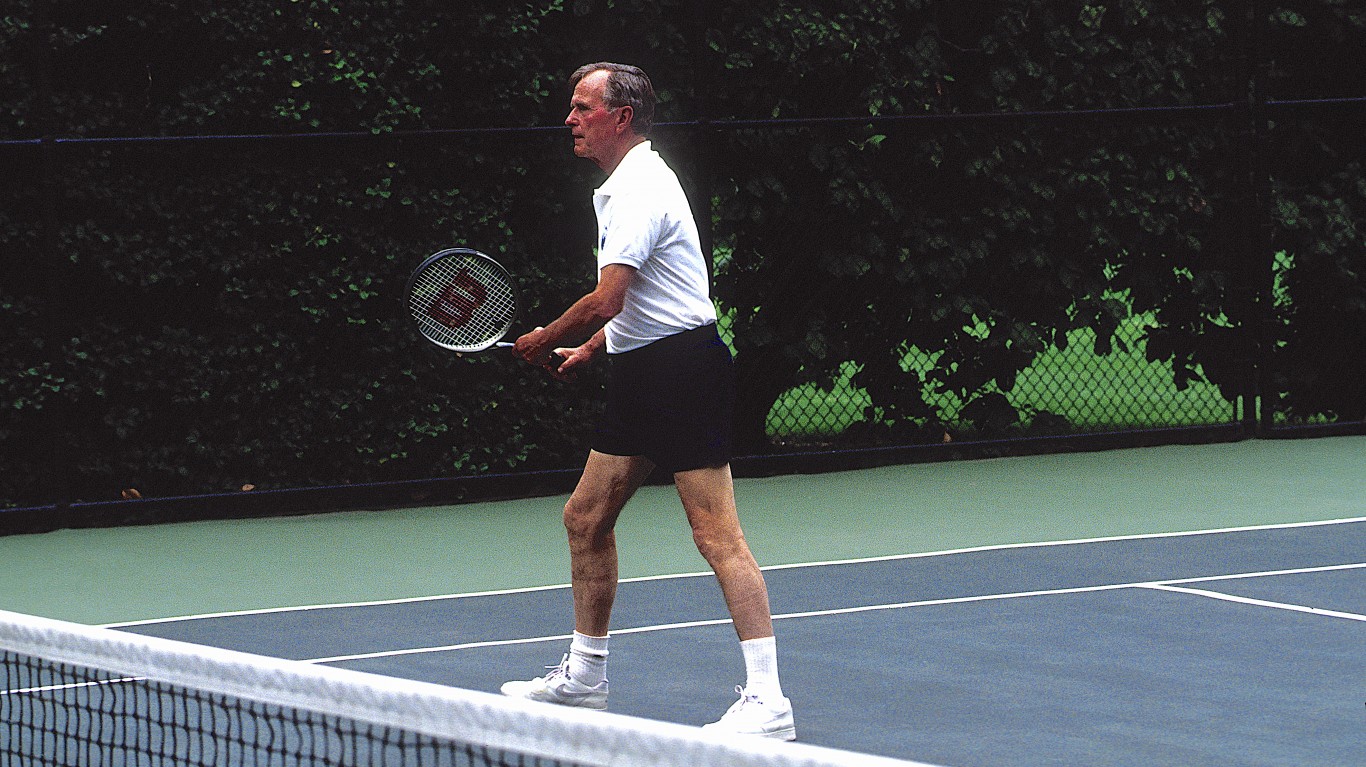
20. Tennis court
The White House has had several tennis courts over the years. The first was constructed under Theodore Roosevelt in the 1910s. Several courts have been the scene of events and matches between presidents, foreign dignitaries, and famous athletes. In 1985 the White House tennis courts were used for a celebrity exhibition to fund the Nancy Reagan Drug Abuse Fund. A pavilion for the current tennis court opened in 2020 under President Trump.

21. Top-tier health insurance for life
U.S. presidents are covered under the Federal Employee Health Insurance Program. Not only do they have health insurance while in office but they continue to have it for life.
[in-text-ad]
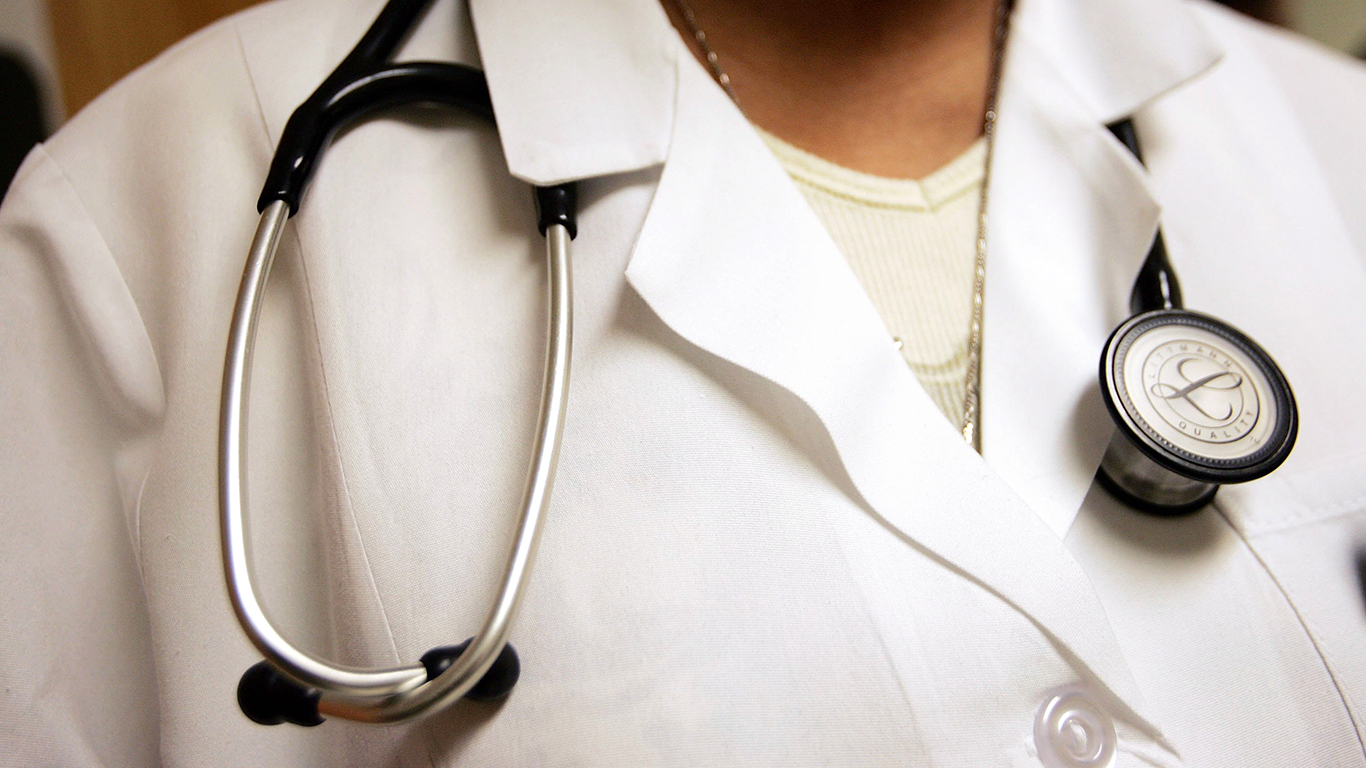
22. Private doctor
The Physician to the President is the official title of the medical professional in charge of keeping the president healthy. They are the director of the White House Medical Unit and also responsible for the health of the Vice President, White House staff, and visitors. The physician has an office in the White House and must be on-call for any medical emergency.

23. Access to art
The White House has an expansive collection of art that includes portraits of several presidents and a lot of works that document important moments in American history. There are also many other works that focus on the American landscape and people. The collection of art at the compound has grown over the years. During the Kennedy administration an official White House curator was hired to continue acquiring works and displaying them throughout the building.
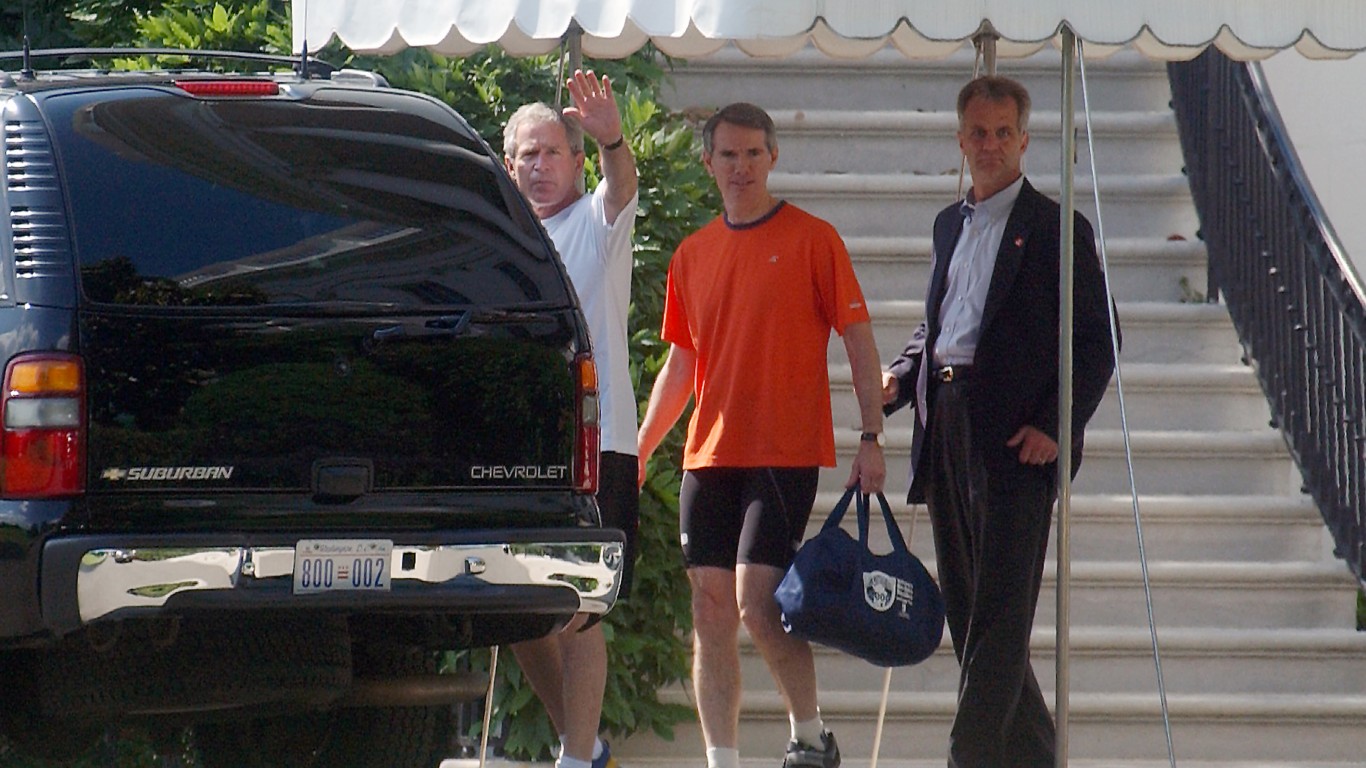
24. Personal trainer
Several presidents had personal trainers throughout their time in office. The styles of exercise presidents engaged in ranged over the years but many of them made it a priority to exercise during their time at the White House. George W. Bush and Bill Clinton both were big on running and Bush even had his personal trainer install a treadmill on Air Force One. Many presidents have also expanded the White House Athletic Center where staff can workout.
[in-text-ad-2]
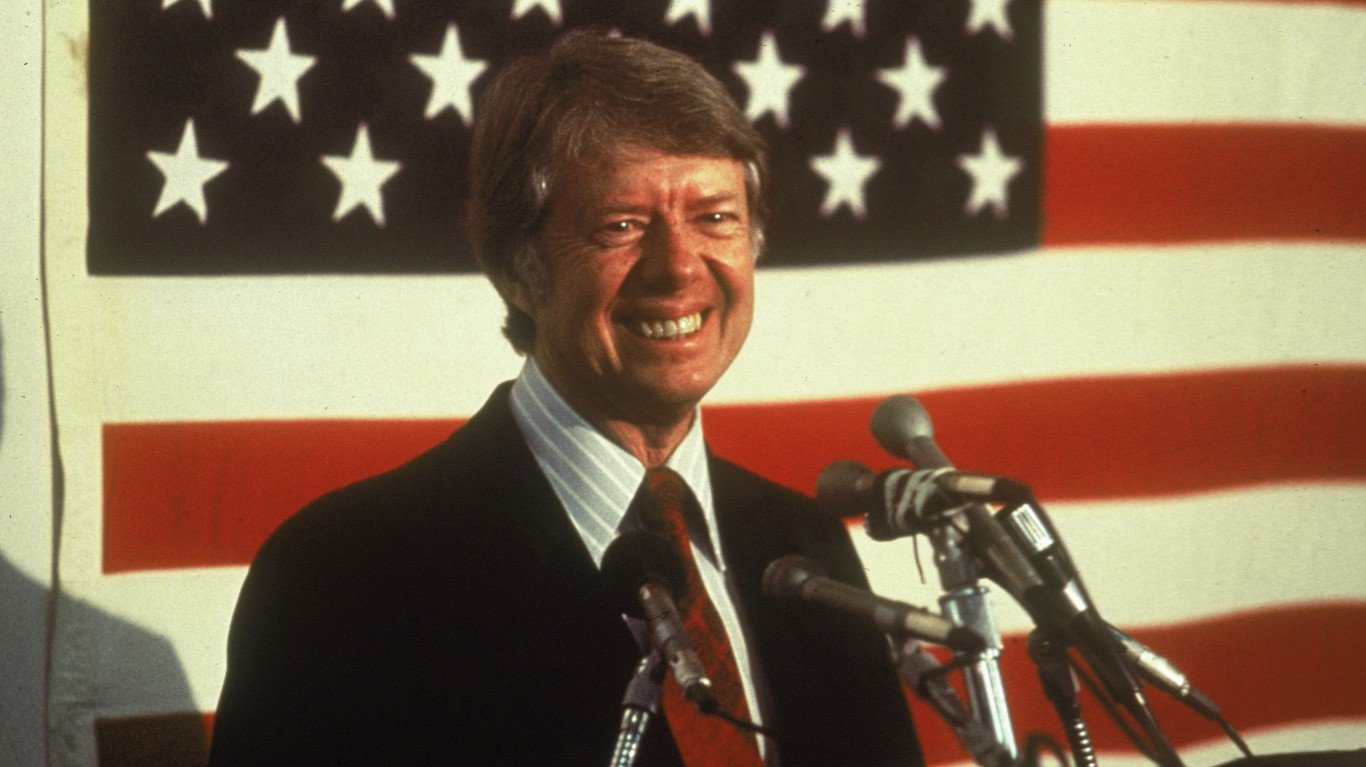
25. Six-figure pensions
Most people have to work decades to even get a pension. However, if you become a U.S. president you only have to be in office for four years. Of course, the road to becoming president and the job itself aren’t exactly easy.
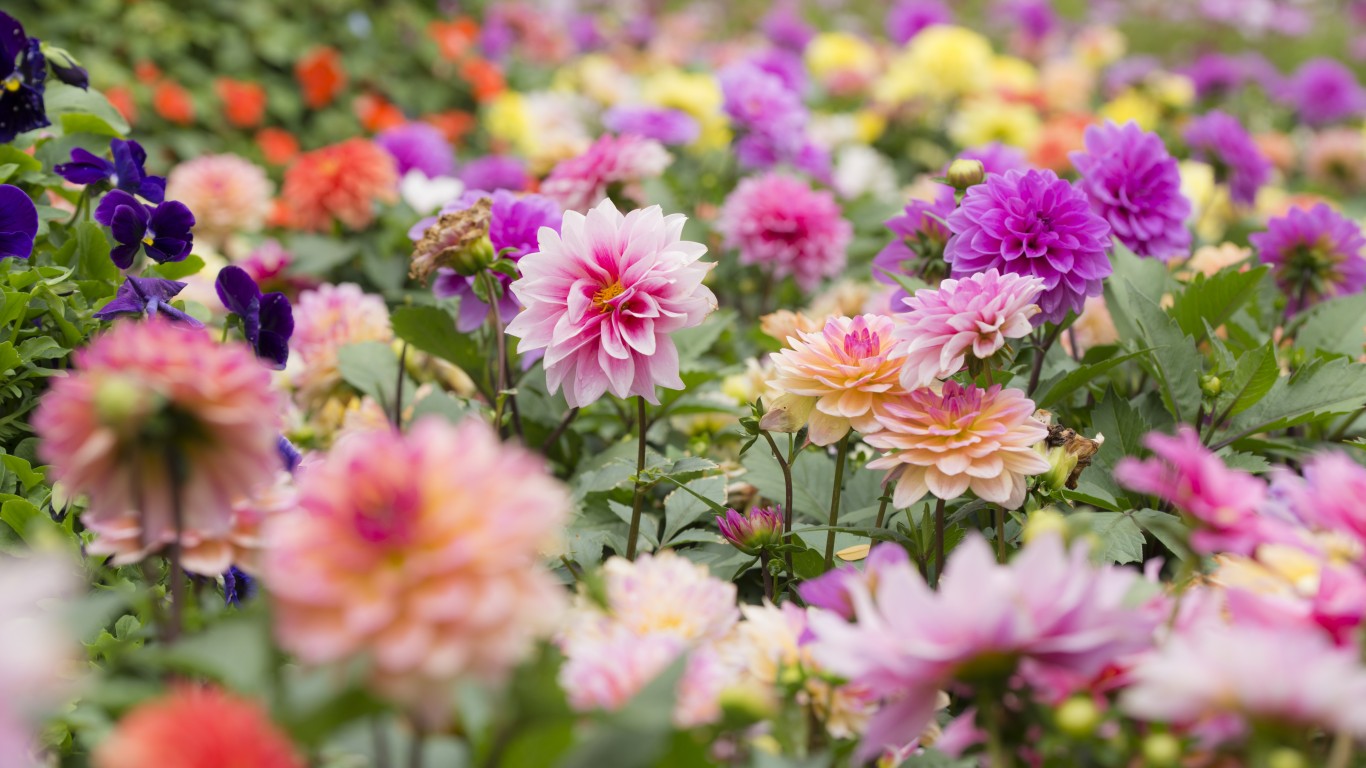
26. Florist
The White House Chief Floral Designer is responsible for floral arrangements and decorations for the First Family and official state functions at the White House. The current Chief Floral Designer is Hedieh Ghaffarian, who has held the job since 2015. She is only the third person to hold the position that was first created in 1978. Flower arrangements at the White House were traditionally very formal in style until the Kennedy administration encouraged its florists to try other styles.
[in-text-ad]
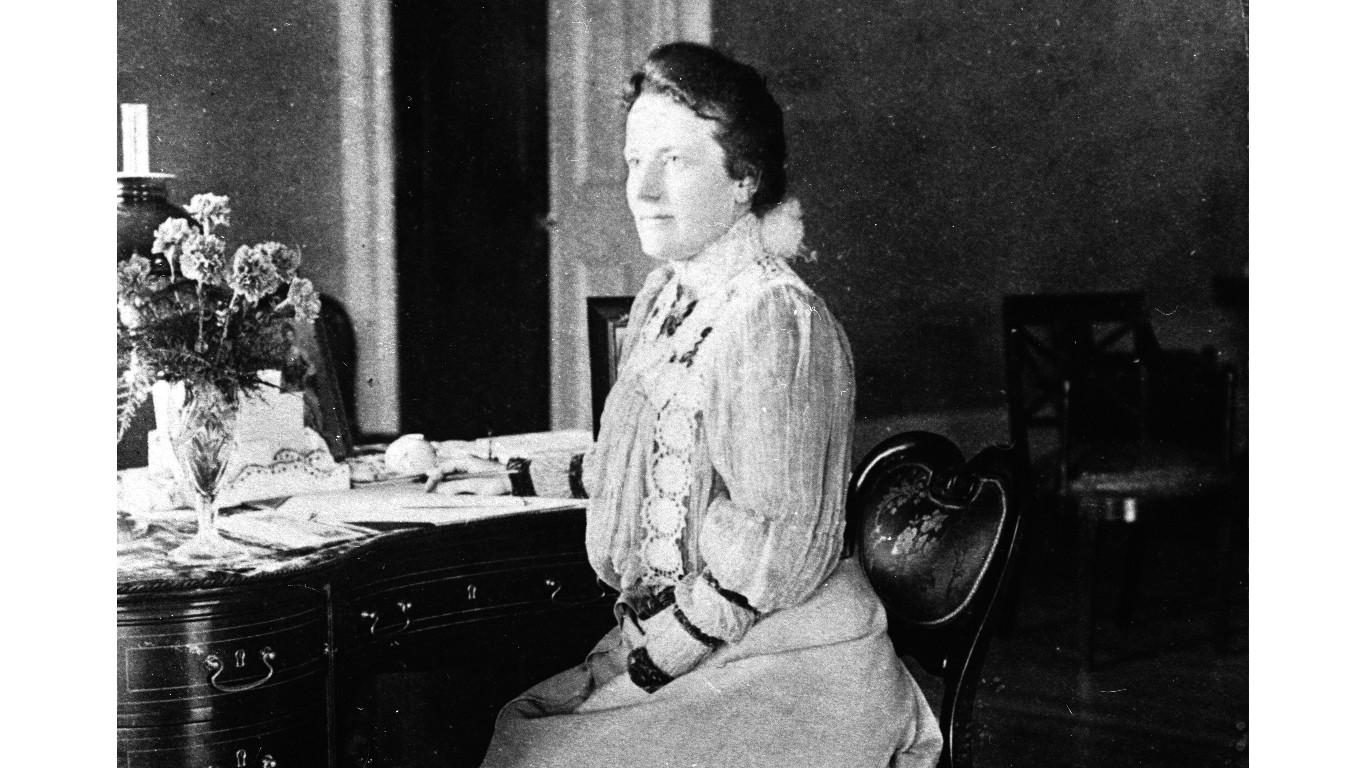
27. Private library
In 1935 Franklin D. Roosevelt turned a room in the White House into his own private library. Since then, the library has evolved and is now stocked by a specific committee. The books include classic works for American literature, history, philosophy and politics. The library has continued to grow over the years.
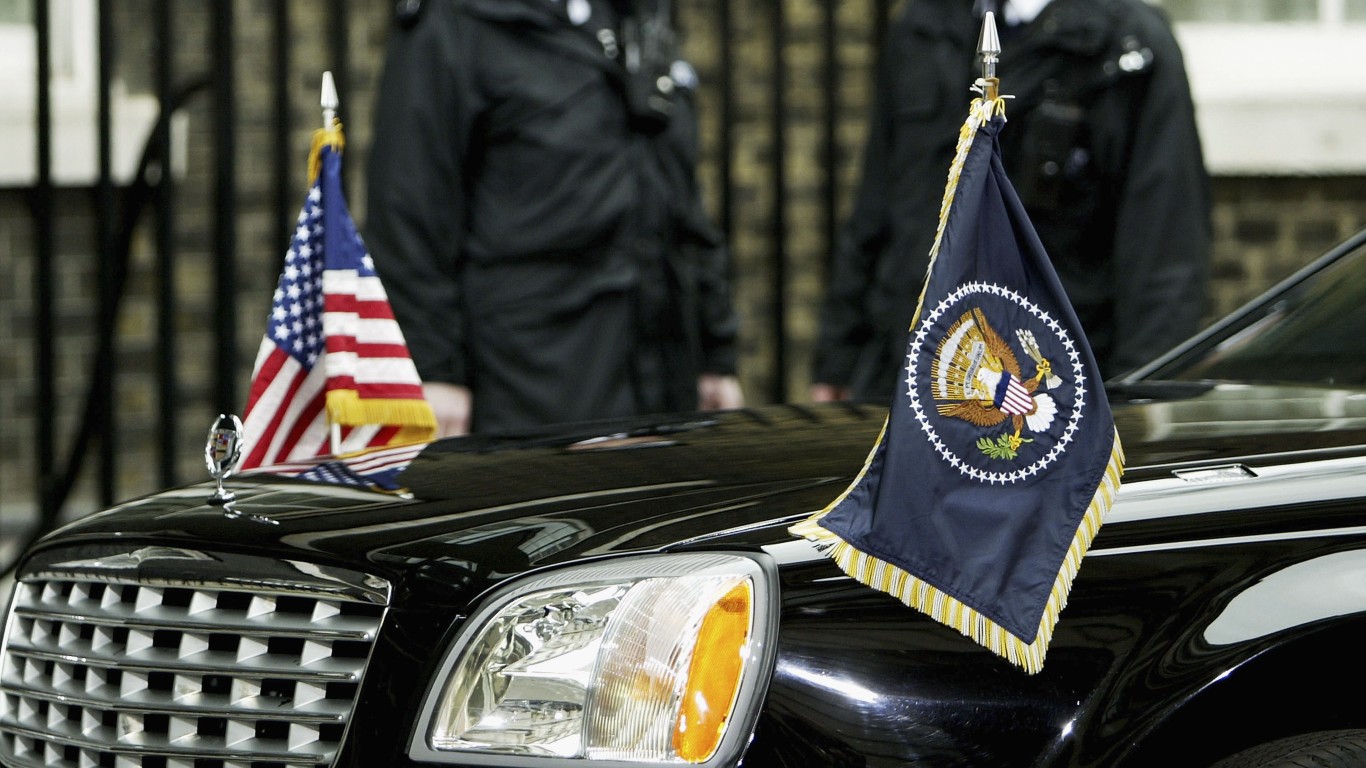
28. The Beasts
The Beasts are the official state cars used by the president. The current models are heavily armored custom-made Cadillac limousines. Presidents began using cars in 1901 and the White House stables were soon replaced with garages. Since the assassination of JFK, the vehicles have increasingly become more armored and equipped with security features. The cars are destroyed by the Secret Service after they are taken out of service.
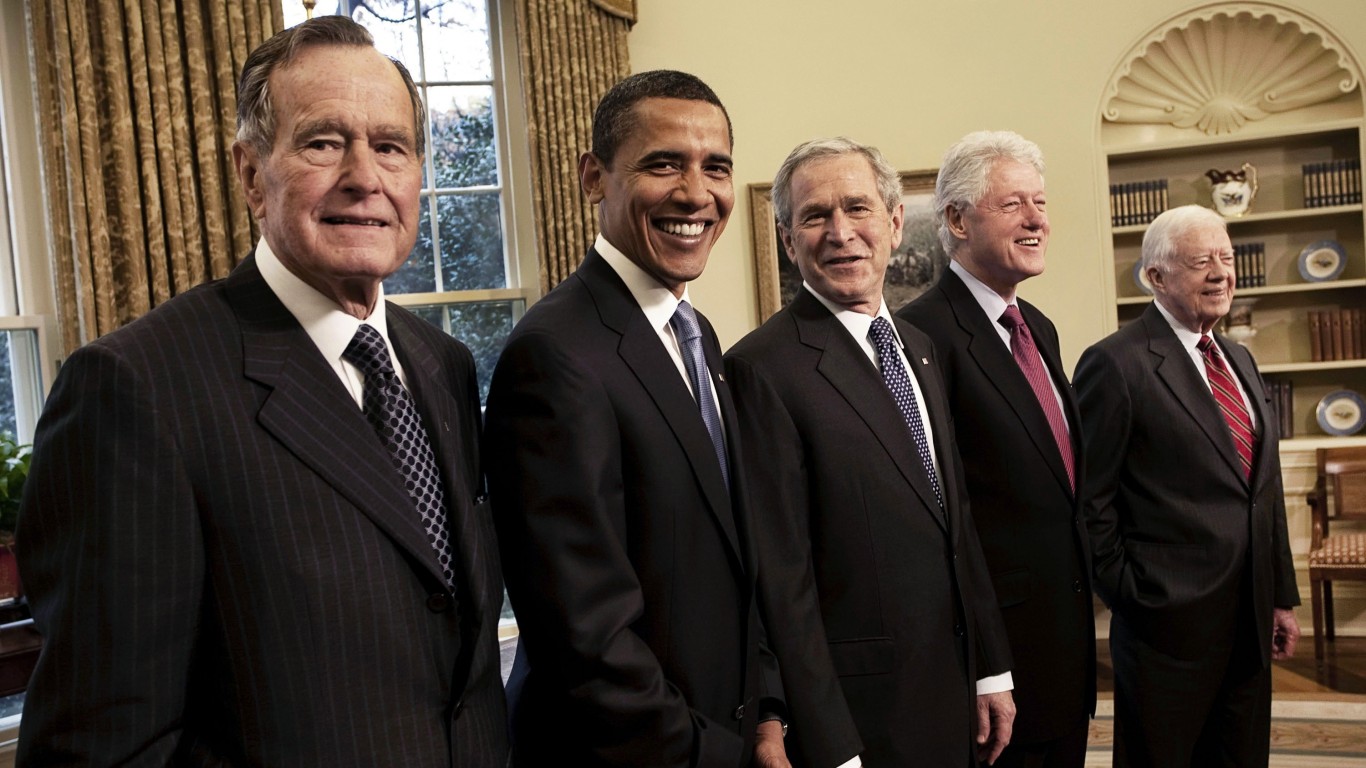
29. Free furnished office and staff for life
Presidents receive funds for office space, furniture and staff for their entire lives after serving in office. The aggregate salary for staff is capped at $150,000 per year for the first 30 months and then $90,000 per year afterwards. What exactly ex-presidents need staff for can differ tremendously but they can be needed for basically anything the president needs.
[in-text-ad-2]
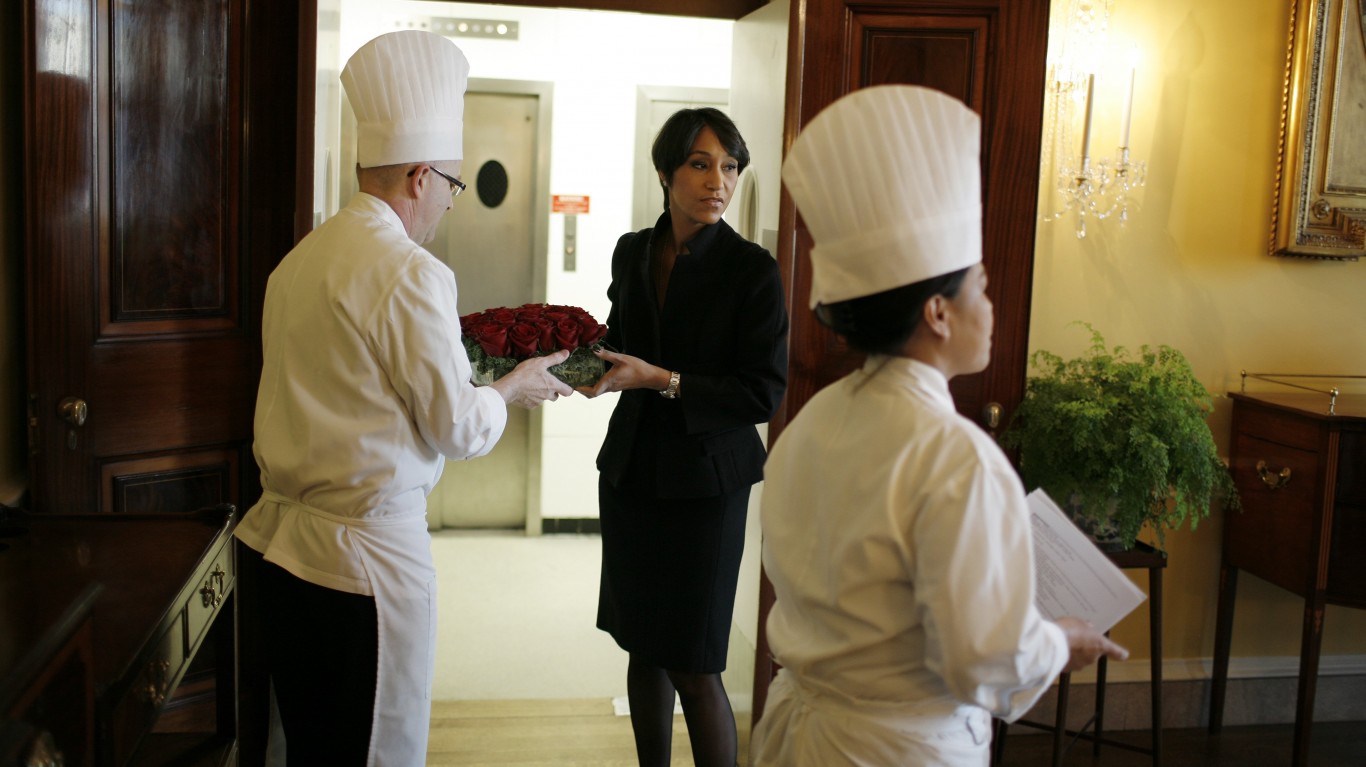
30. Private chef
The White House Executive Chef is responsible for planning and preparing all meals for the president and the First Family as well as private entertaining and official state functions at the White House. Cristeta Comerford is the current Executive Chef and has served under four administrations, starting in 2005. The first Executive Chef position was established in 1961 under the Kennedy Administration.
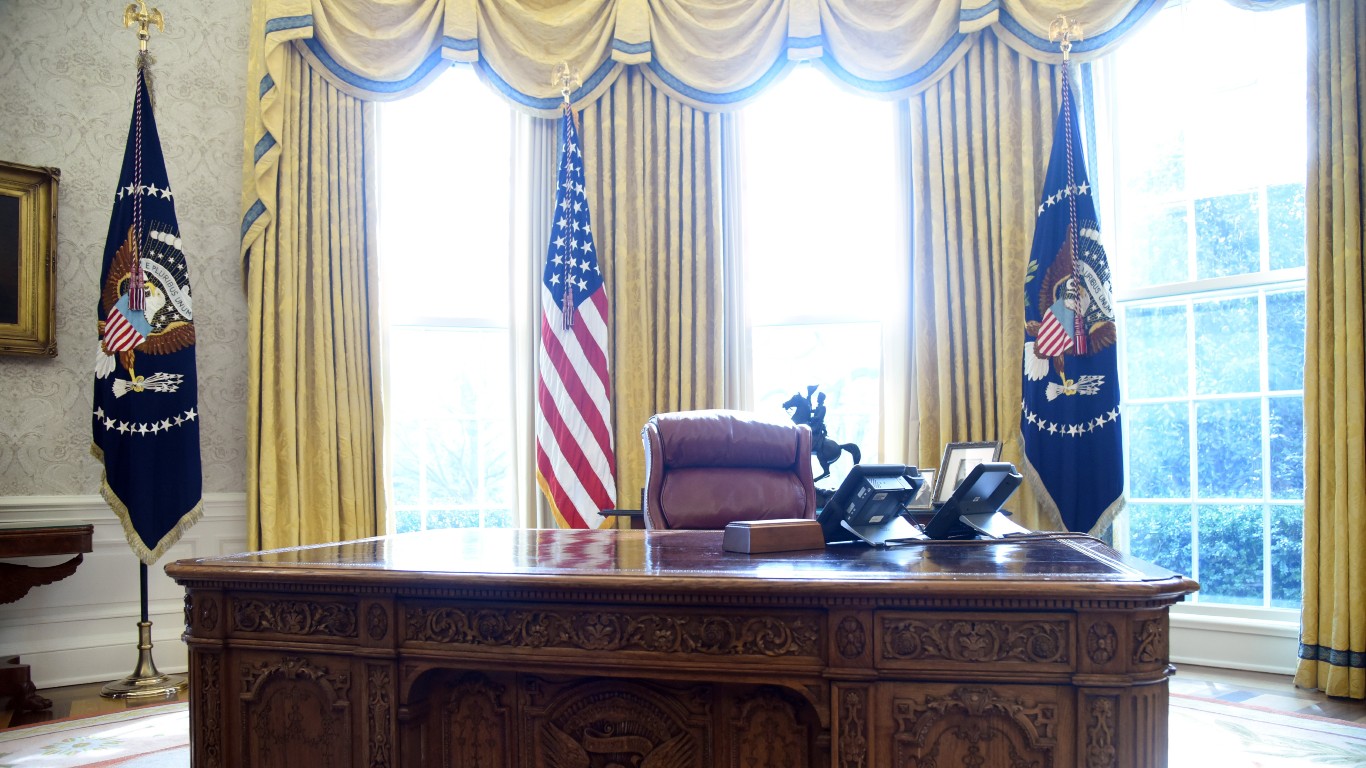
31. Big red call button
While a big red button might seem a bit ominous on the desk of a person in charge of nuclear weapons, this one has a much more benign use. U.S. presidents have quite a lot of staff at their beck and call and sometimes they just need a beverage or someone’s assistance. The red button atop the president’s desk in the Oval Office calls someone in to help them at any time of the day.
[in-text-ad]

32. At-home theater
No expansive mansion is complete without an at-home movie theater. The one in the White House was converted from a cloakroom in 1942 and currently can sit 42 people. Over the years, studios have tried hard to get their films screened at the White House as it’s good for publicity. The movie industry even financed the remodeling of the theater in the 1980s. Several presidents were known to have been big movie buffs and a list of films screened by Bill Clinton is even available thanks to a Freedom of Information Act request filed by Gizmodo.

33. Private hospital suite
The White House Medical Unit is a part of the White House Military Office and responsible for taking care of the president, his family, visiting dignitaries, and staff members. The facility includes emergency medical and trauma units and has to be prepared for just about any medical emergency. The area is also used for more routine care such as checkups and vaccines.
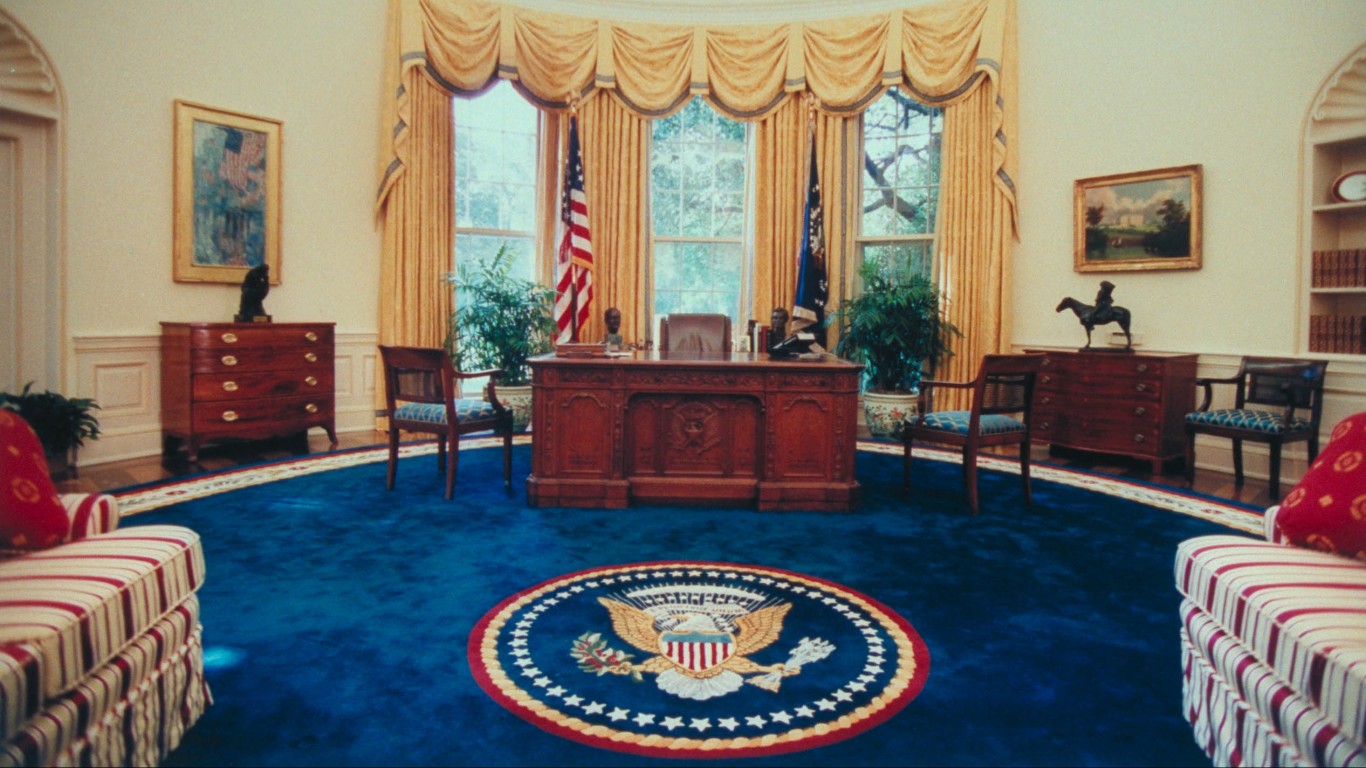
34. Redecorating budget
When a president and their family first arrive at the White House they are given a $100,000 decorating budget. Anything they spend beyond that to change the décor they are supposed to pay for themselves. When it comes to personal quarters, the president and their spouse are given free reign to redecorate however they want, including changing furniture and paint. But there are several historic rooms in the White House that cannot be changed without special permission.
[in-text-ad-2]
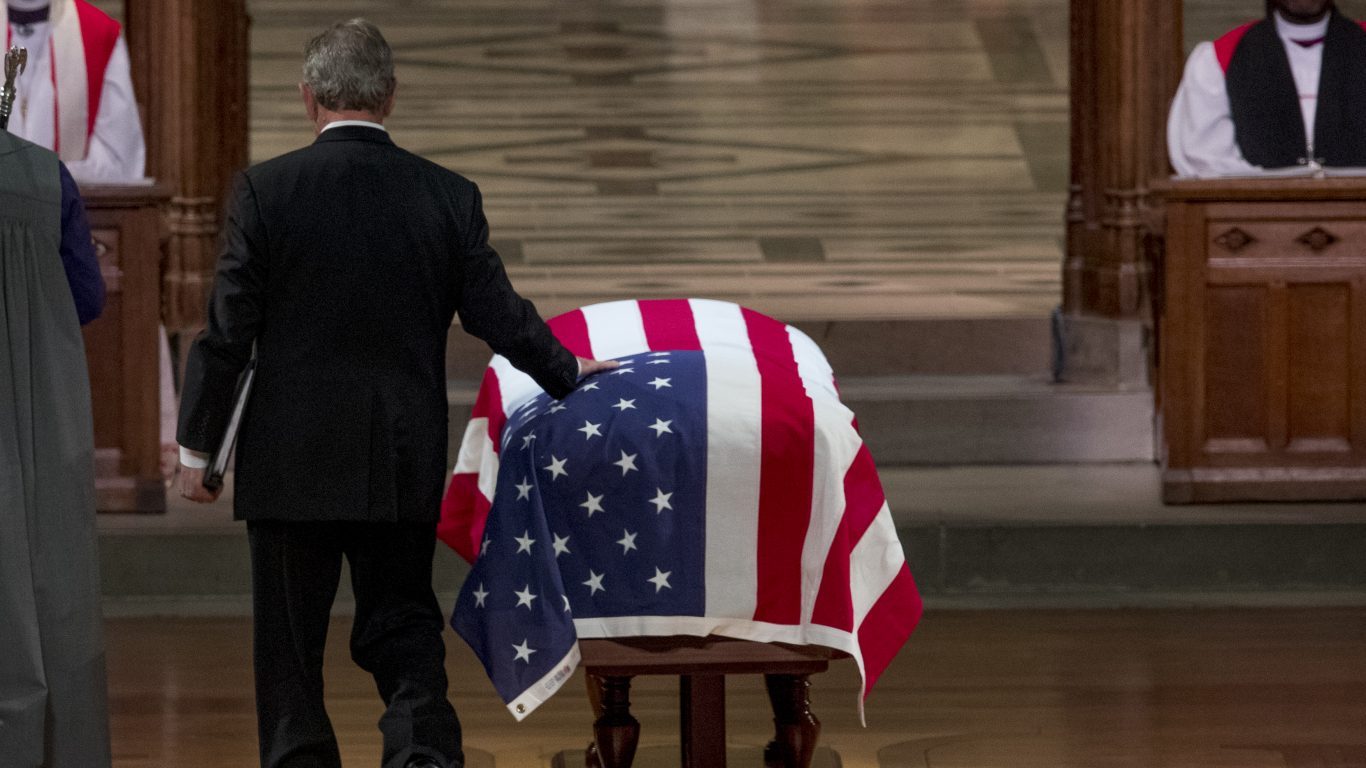
35. State funerals
State funerals are official funerals carried out by the United States Government and are only offered to current and former presidents, vice presidents, other high-ranking members of the government and, occasionally, highly distinguished citizens. The ceremony is usually held in the nation’s capital and conducted by the Military District of Washington. Often, state funerals for presidents are held in Washington D.C. and their remains are then interned at a different location in the country.
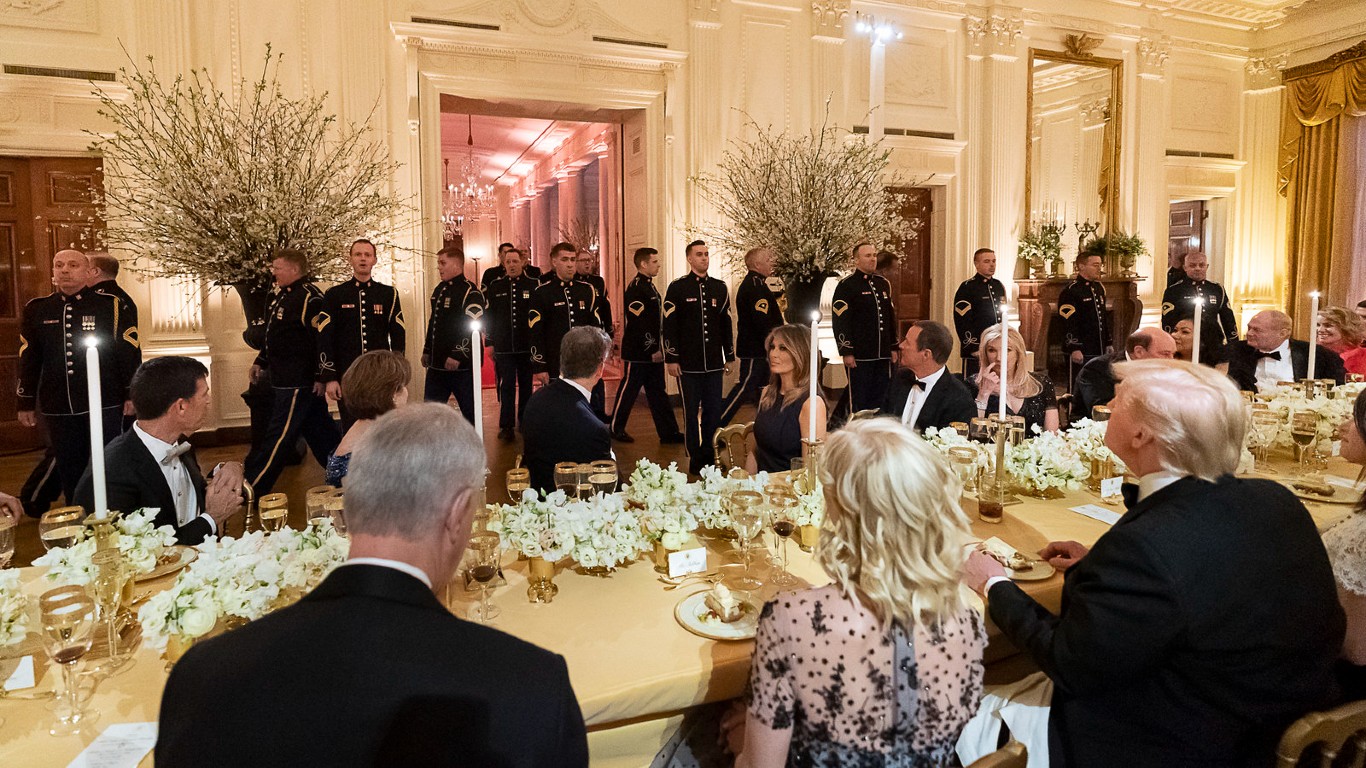
36. White House parties
While the president has one of the most exclusive venues in the world to throw private parties, they actually may have to foot the bill themselves. They have a budget to throw social engagements that are related to state business but if they just want to have people over they are supposed to pay for the staff and other related expenses themselves.
[in-text-ad]
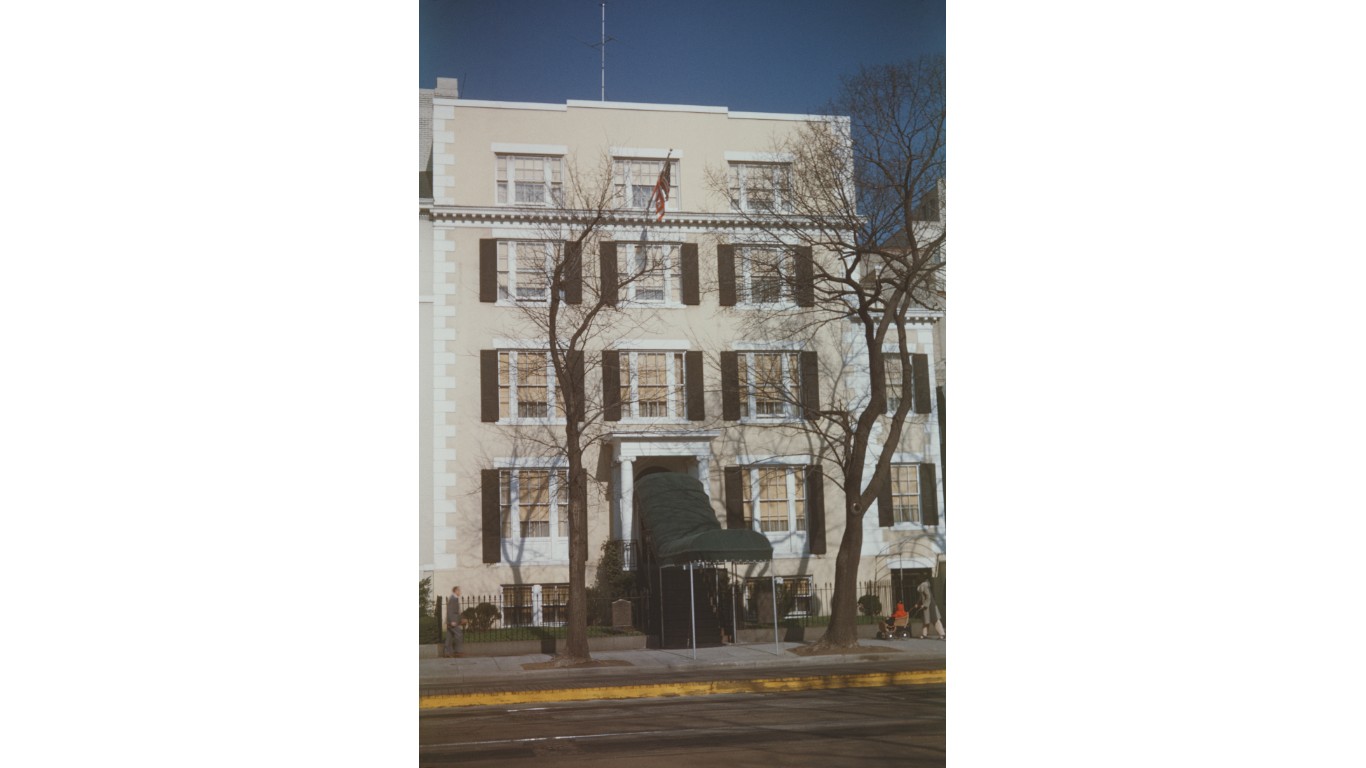
37. Guest house
Located across the street from the White House, 60,000 sq. ft. Blair House is the president’s official guest house. The building was constructed in 1824 and has played numerous roles over the years. It is often used as a place to stay by foreign dignitaries and other important guests of the president. President Harry S. Truman lived in the house from 1948 to 1952 while the White House was under renovation and survived an assassination attempt there in 1950.
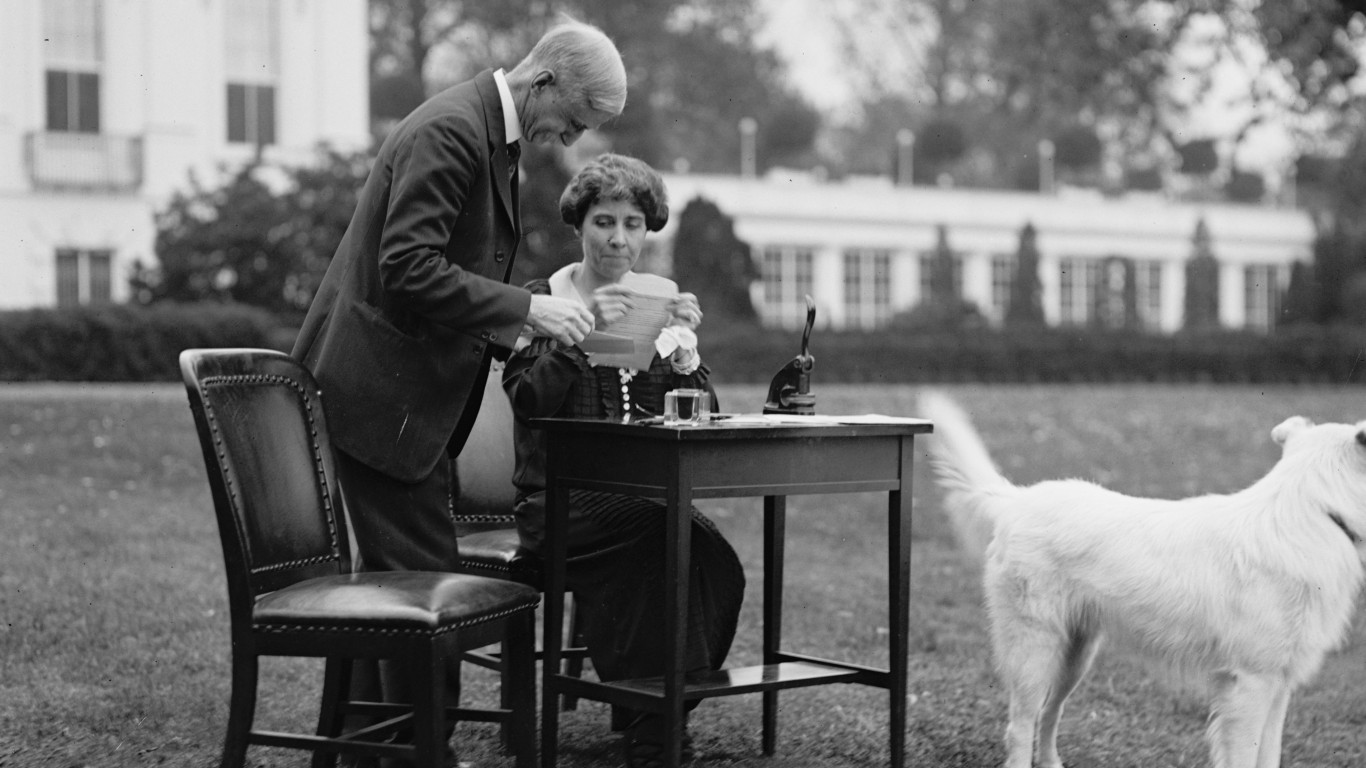
38. Free mail
Stamps really burning a hole in your pockets? Have you considered becoming president of the United States? Not only does the president not have to pay for mail while they’re in office but they all get free mail for life once they are out of it. While this might not sound like a big expense, it can add up. The taxpayers spent $15,000 on Jimmy Carter’s postage in 2010.
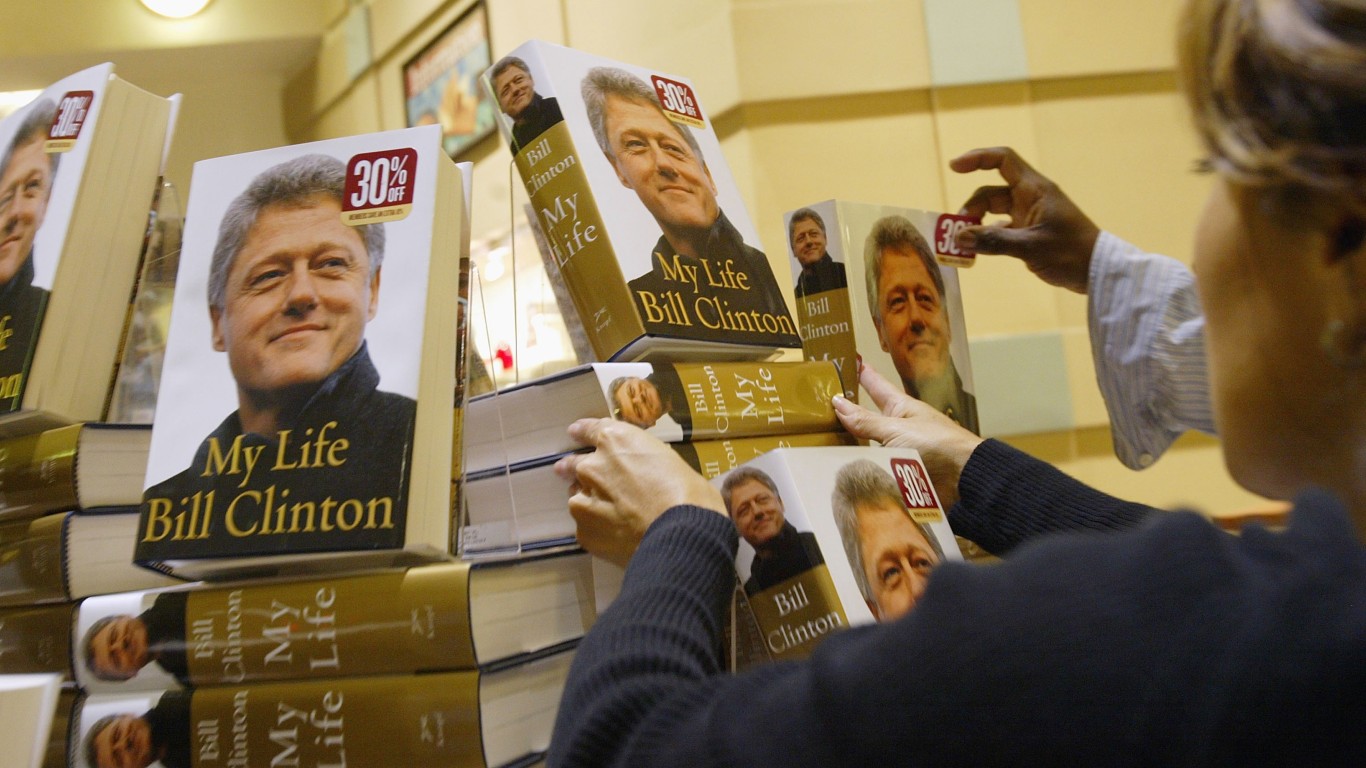
39. Book deals
Book deals are not actually guaranteed to a president but they have become the norm . An autobiography can be a great way for presidents to tell their side of the story while cashing in big time. Usually, they have a professional author help write part or all of it. These books are basically destined to be best-sellers when they are released.
[in-text-ad-2]

40. Presidential libraries
Presidential libraries are technically not guaranteed but all former presidents, except Trump (for now) have presidential libraries. These establishments aim to promote understanding of the presidency, the historical context, and how the country changed during the president’s time in office. They often also feature more personal items and accounts from presidents. They aim to show the presidency and the presidents themselves.
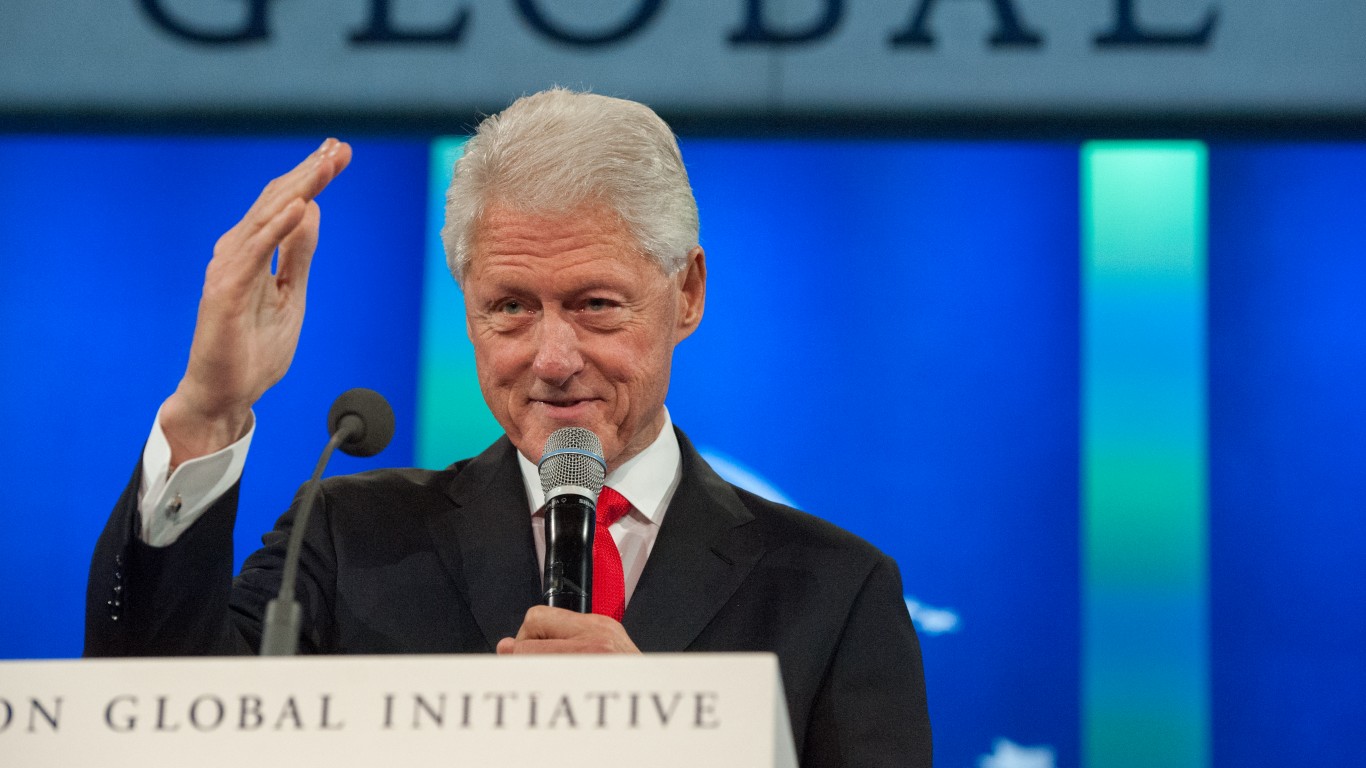
41. Speaking fees
After being president a substantial amount of windfall opportunities open up. One of the biggest (and maybe easiest) is speaking engagements. Former presidents get paid astronomical figures to show up and talk for 30 minutes about life and their experiences. All presidents in recent times have seen their net worth go up dramatically in the years following their presidency, especially compared to when they first entered office.
[in-text-ad]
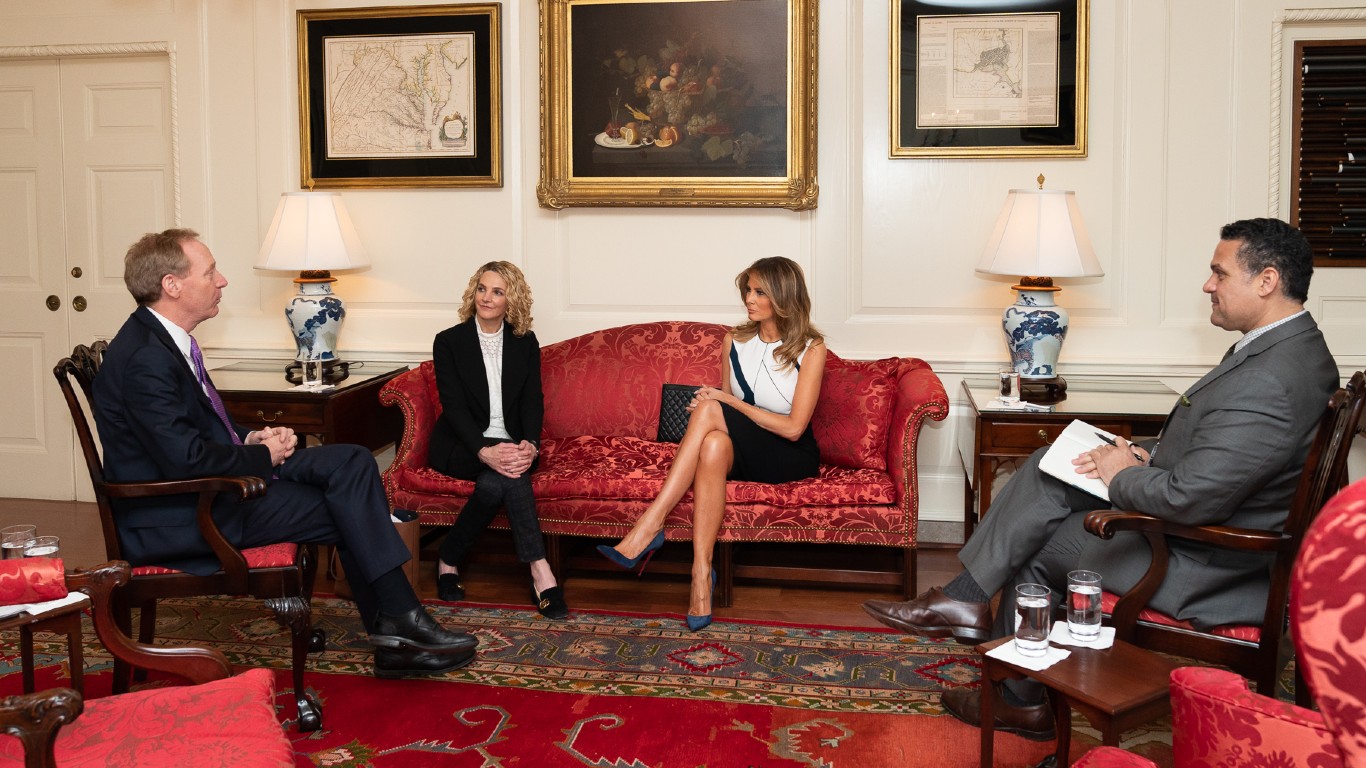
42. Billiards room
The original billiard room was created in 1928 and sat on the ground floor of the compound. The room was used by Calvin Coolidge during his time in office. That space is now officially the Map Room. Instead, a billiards table is now in the game room on the third floor of the house along with a ping-pong table and several other games.
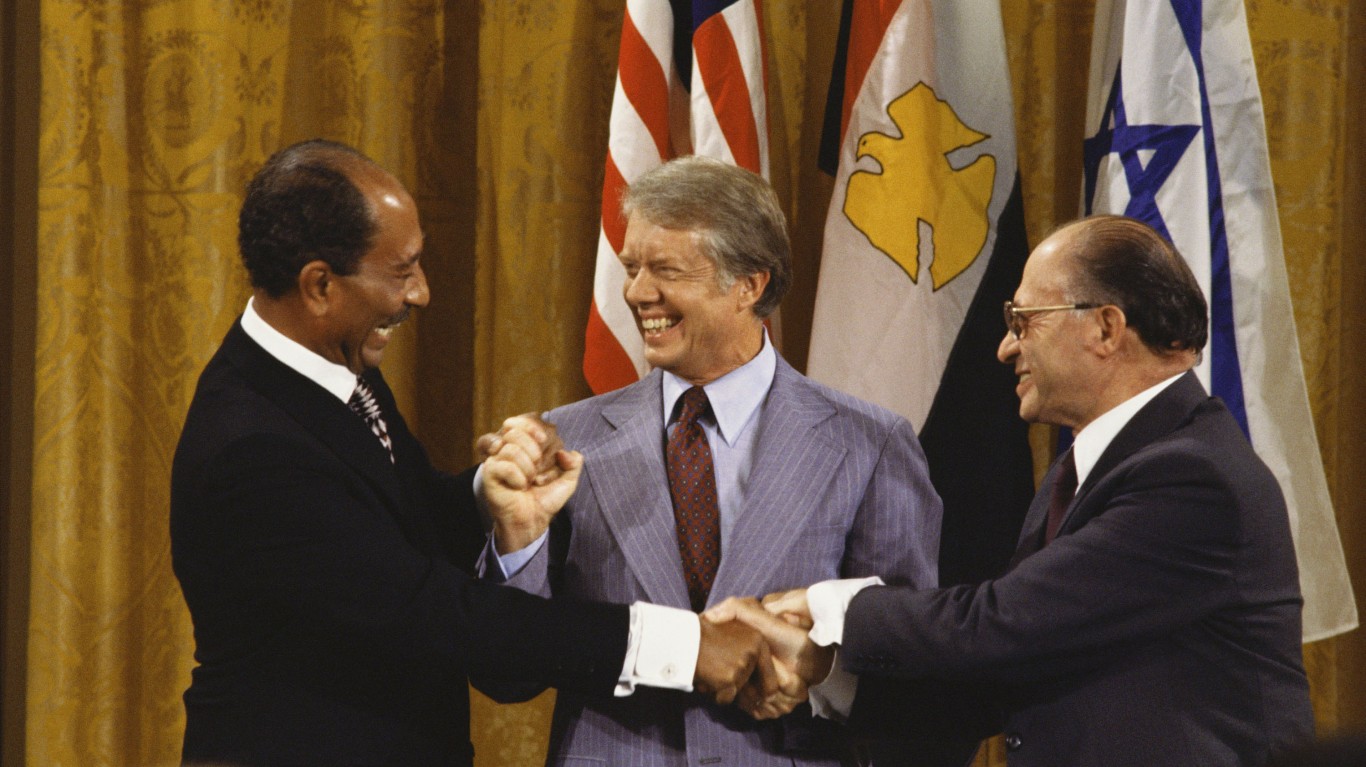
43. Camp David
Camp David is the president’s official country retreat in Maryland, about 60 miles from Washington D.C. The site was completed in 1938 and has served a variety of purposes over the years. It is now a place for the president to get away from the hustle of the capital and relax. However, it is also used as a place for diplomacy where the president meets other politicians and foreign dignitaries. It was the site of the famous 1979 Egypt-Israel Peace Treaty known as the Camp David Accords.
Are You Ahead, or Behind on Retirement? (sponsor)
If you’re one of the over 4 Million Americans set to retire this year, you may want to pay attention.
Finding a financial advisor who puts your interest first can be the difference between a rich retirement and barely getting by, and today it’s easier than ever. SmartAsset’s free tool matches you with up to three fiduciary financial advisors that serve your area in minutes. Each advisor has been carefully vetted, and must act in your best interests. Start your search now.
Don’t waste another minute; get started right here and help your retirement dreams become a retirement reality.
Thank you for reading! Have some feedback for us?
Contact the 24/7 Wall St. editorial team.
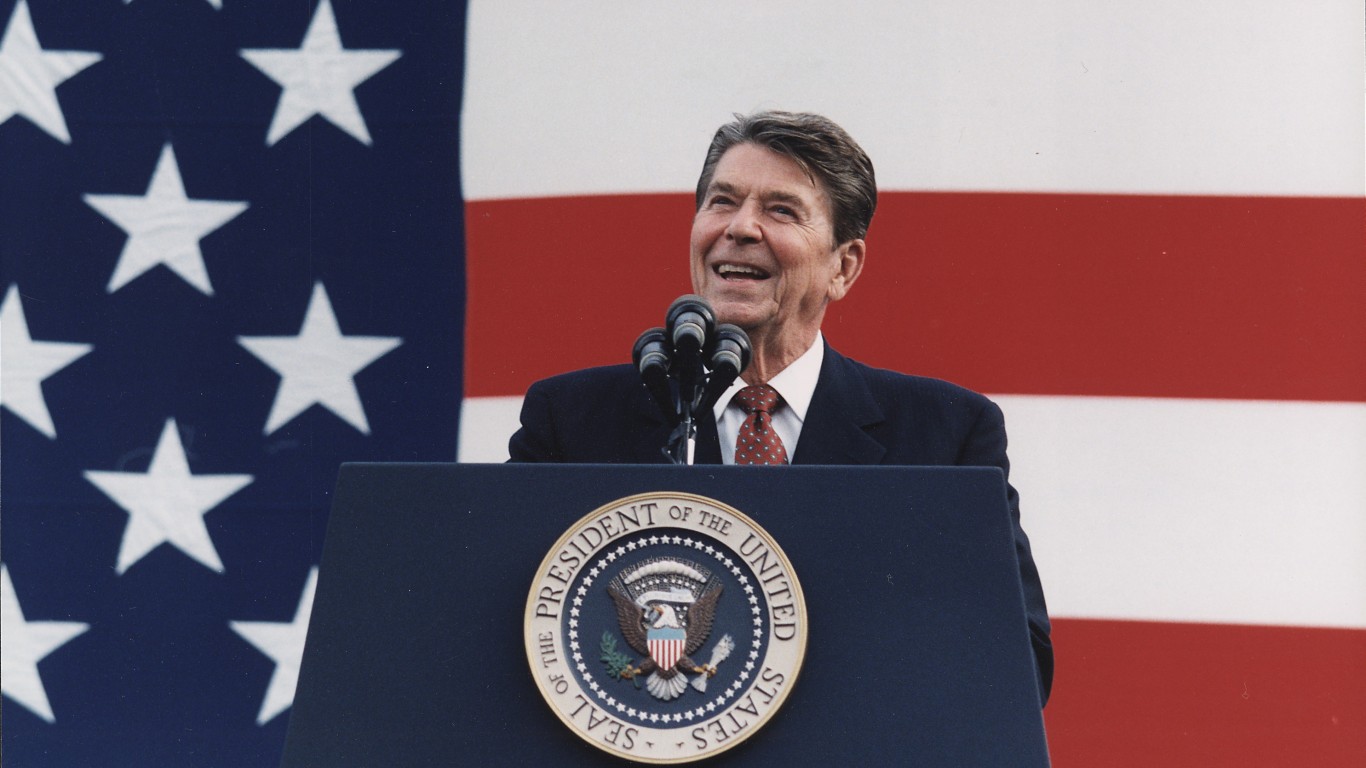 24/7 Wall St.
24/7 Wall St. 24/7 Wall St.
24/7 Wall St.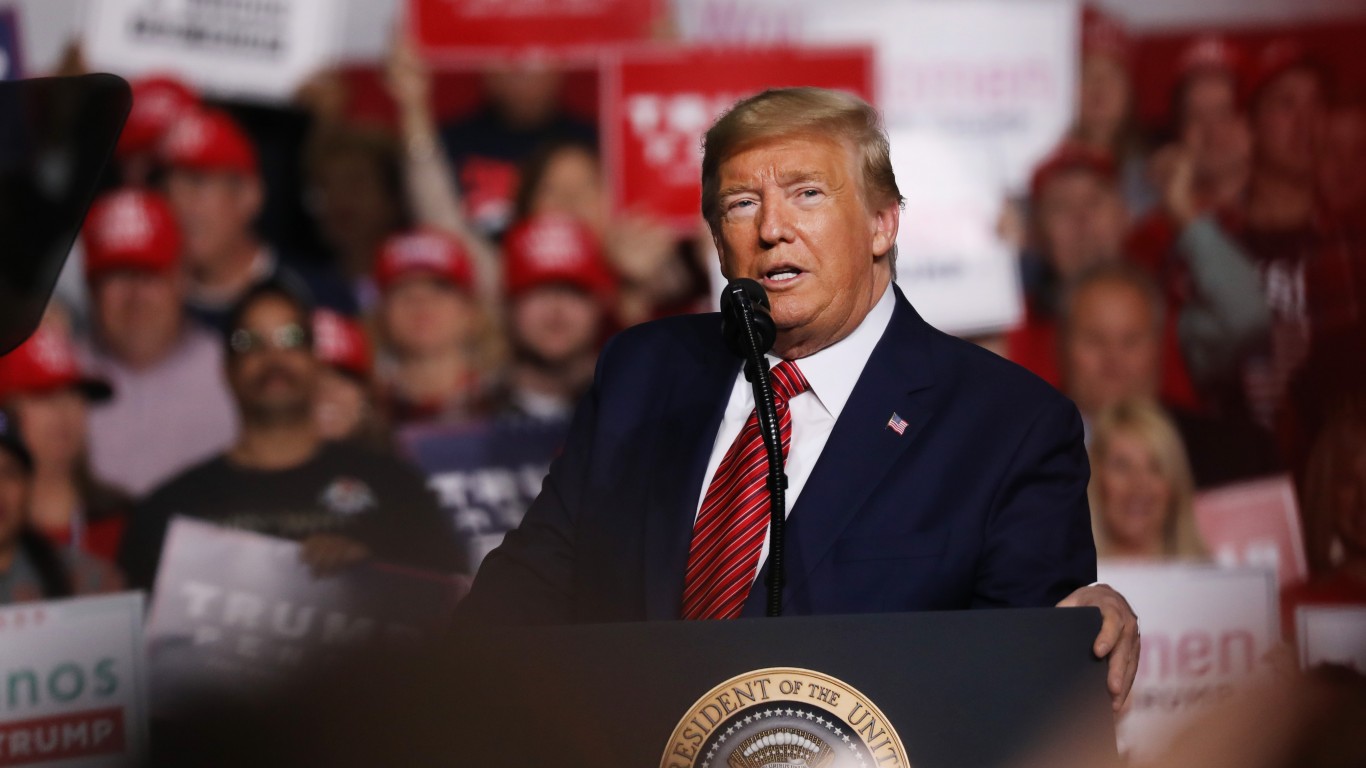 24/7 Wall St.
24/7 Wall St.